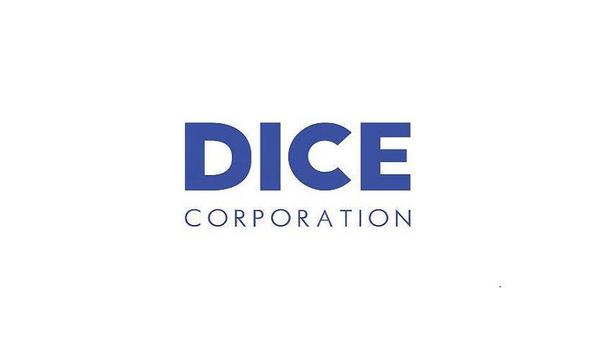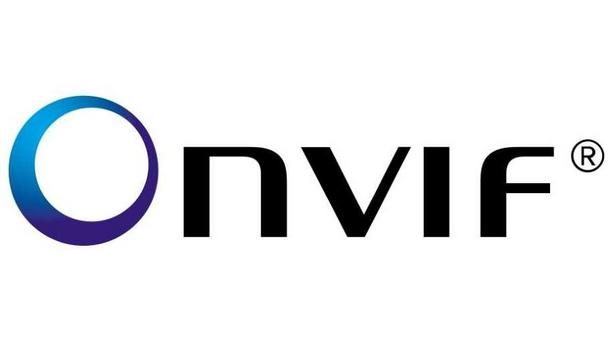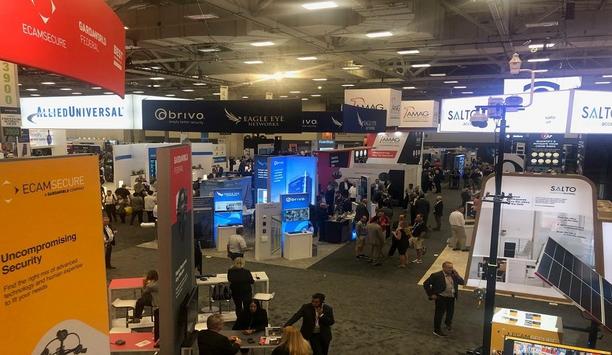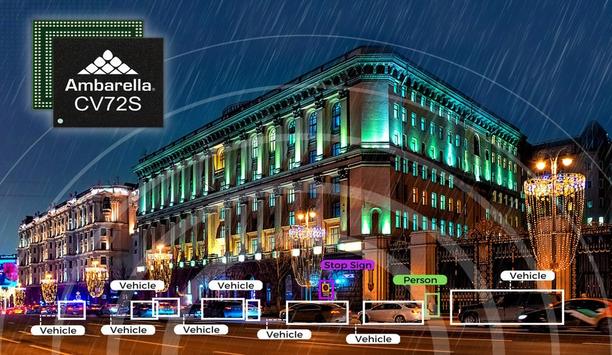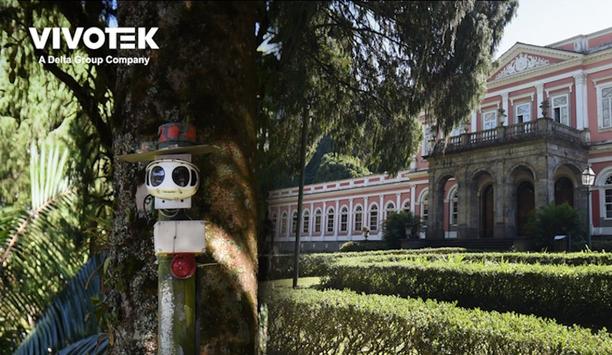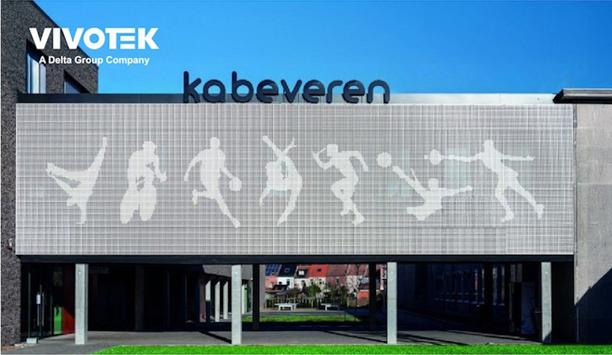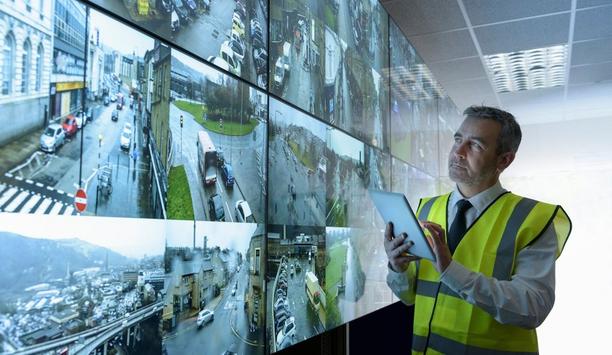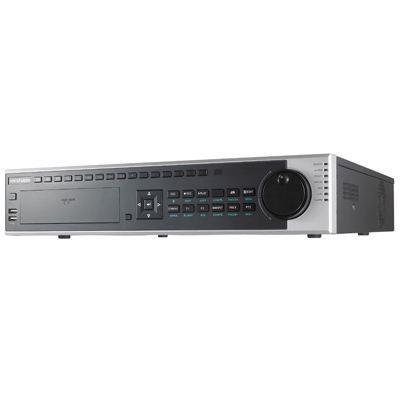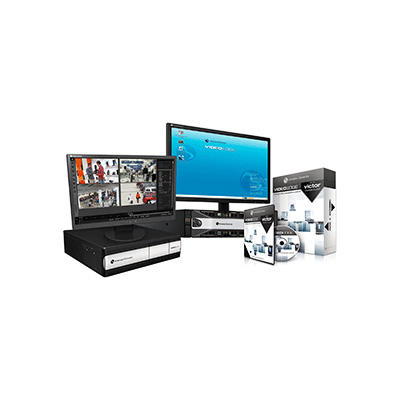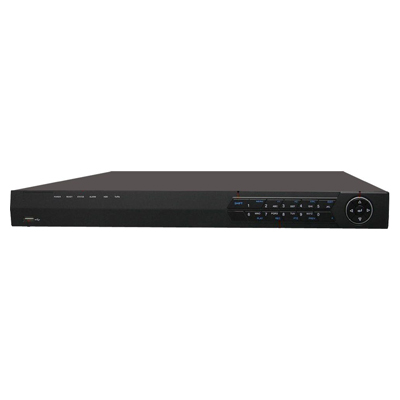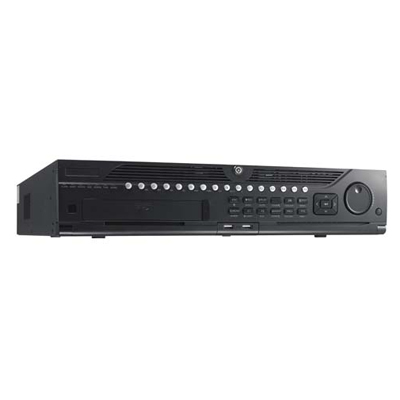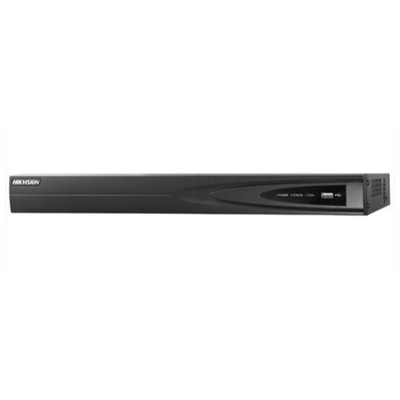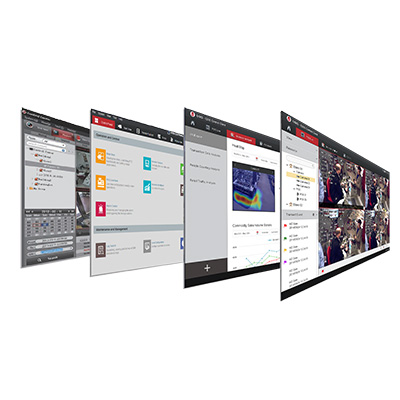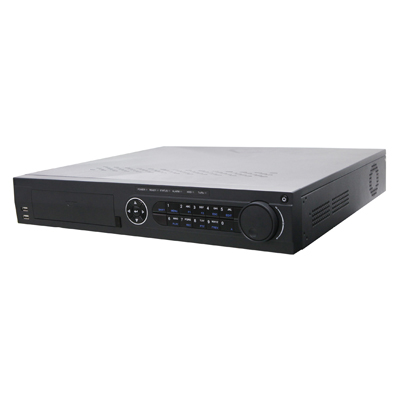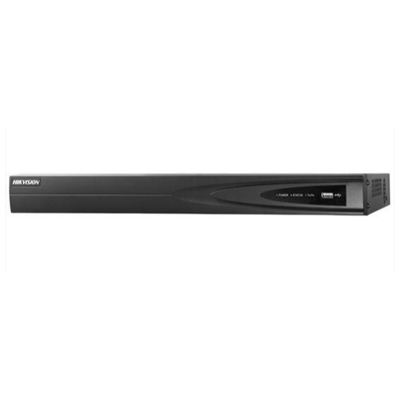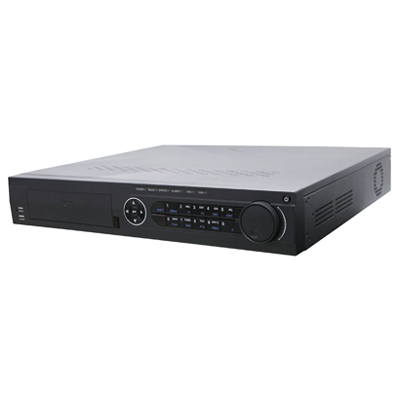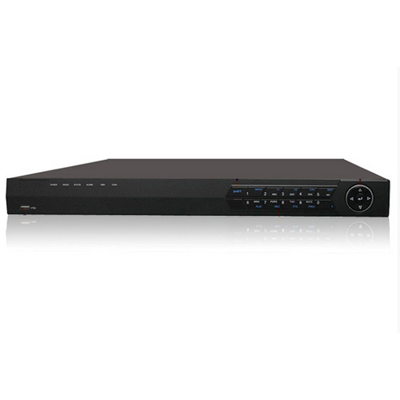Video Management System
Audio Central Alarm, a client of DICE Corporation, has become the first alarm company in the industry to implement full nationwide branded call display. This groundbreaking service ensures that both service and sales calls from Audio Central now display the company’s logo and identity to recipients across the country—including calls from its central station partner, CSA Monitoring, based in Lansing, Michigan. Branded calling technology Historically, the alarm industry has str...
Genetec Inc., the pioneer in enterprise physical security software, has announced the dates for its annual empower360 roadshow. Scheduled to take place in Dubai, United Arab Emirates (UAE), on 17 April 2025, the partner-focused event will bring together industry professionals to explore the evolving role of physical security in the country. Adaptable deployment models According to the Genetec State of Physical Security Report 2025, 66% of physical security consultants and channel partne...
Untether AI®, a pioneer in energy-centric AI inference acceleration, is teaming up with AI Platform Alliance members Ampere® Computing, NETINT, ZoneMinder, AVC Group, and ASA Computers to introduce the Intelligent Video Recording (IVR) solution at ISC West 2025, the premier security industry tradeshow. This groundbreaking AI-powered system sets a new benchmark in video surveillance, delivering up to 8x better AI camera efficiency while operating in an eco-friendly server cons...
Digital Watchdog (DW), the industry pioneer in digital recorders, surveillance cameras, system peripherals and related management software, announces the strategic technology collaboration with Allied Telesis, a pioneer in connectivity solutions and intelligent network tools. Building on our commitment to innovation, DW Spectrum now works with StreamConnect for DW Spectrum by Allied Telesis, a dedicated plugin for DW Spectrum IPVMS. This integration enhances network visibility, simpli...
Omada by TP-Link and VIGI by TP-Link, TP-Link Systems Inc.’s exclusive business solutions brands, are set to make waves at ISC West 2025 with the debut of their groundbreaking unified networking and surveillance solutions. At the event, the brands will showcase a seamless integration of VIGI’s cutting-edge surveillance solutions, Omada’s comprehensive networking systems, and the Omada Central platform—a revolutionary cloud-based solution that unifies the management of ne...
The company has introduced the IndoorCam. Designed for private households, small offices, and small to medium businesses, it combines Wi-Fi flexibility with Ajax’s professional security standards. Featuring a fallback communication channel via the Jeweller radio protocol, built-in AI, and encrypted data transmission, IndoorCam ensures reliable monitoring. Smart video surveillance with built-in AI PIR sensor detects motion at a distance of up to 4 m, while built-in AI recognises peo...
News
Eagle Eye Networks, the global pioneer in cloud video surveillance, launched Eagle Eye Automations. A flexible and extensible rules engine for automating tasks that empowers businesses to proactively and economically improve security, safety and business operations. Simplifying security management “Today’s security systems are complex, increasingly incorporating video surveillance, AI, analytics, sensors, and other third-party devices and technologies. Eagle Eye Automations enable disparate components to work together effectively,” said Dean Drako, Eagle Eye Networks CEO. “Automations simplify operations for the business owner, reduce the need for manual intervention and extra staff, ensure timely responses, and strengthen overall security management.” Seamless system integration Eagle Eye Automations works by connecting multiple systems within the Eagle Eye Cloud VMS Eagle Eye Automations works by connecting multiple systems within the Eagle Eye Cloud VMS (video management system), defining rules for various events–such as when a person or vehicle is detected, or a certain license plate is recognised–and triggering automatic actions. Examples of actions include sending real-time notifications, automatically locking or unlocking doors, or sending information to a third-party professional monitoring center. Easily configured and managed through the Eagle Eye Cloud VMS, all Automations can be customised to the specific needs of any business. Automating safety & security Eagle Eye Automations include: Theft Deterrence Automation: At an auto dealership, AI detects a person moving through the car lot after-hours, triggering a connection with a professional monitoring station and initiating an audio warning to leave the area. Intrusion Detection Automation: In a restricted area, AI detects a person or movement, triggering an API integration via webhook, initiating actions such as opening a door, turning on a light, or playing an audio clip. Parking Automation: At a university parking garage, a video surveillance system with License Plate Recognition (LPR) detects an unauthorised vehicle attempting to enter. The gate does not open and the license plate is recorded in the system for further investigation. Water Damage Prevention Automation: Sensor detects water, and a notification is sent to the facility manager, who checks on camera, and then shuts down the water supply Air Quality Automation: In a high school bathroom, a sensor detects vaping and sends an alert to the school resource officer (SRO). The SRO verifies the event, gains additional information from security cameras located in the hallway outside the bathroom, and is ready to take informed action. System Healthcheck Automation: At a commercial business, an offline camera is detected, triggering a ticket creation for repair and a notification to the reseller and business manager. Retail Intelligence Automation: At a retail store, when AI detects people entering the store within the first five minutes of opening, the manager is notified that the store has opened on time. Enhanced remote surveillance Eagle Eye collaborated with iNet Security on a new Automation with Immix central station monitoring software Eagle Eye collaborated with iNet Security and Surveillance of San Antonio, Texas, on a new Automation with Immix central station monitoring software that makes video monitoring more accessible and cost effective for businesses. “By eliminating restrictions on camera compatibility, simplifying setup, removing the need for port forwarding or VPNs, enhancing video analysis, and reducing costs, this automation redefines what’s possible in remote video monitoring,” said Steven Ballard, Managing Member, iNet Security and Surveillance. “The automation supports two-way speaker functionality, and enhanced people and vehicle detection analytics. It also includes push and email notifications for customers who prefer to self-monitor.” Centralised control hub Benefits of Eagle Eye Automations include: Streamlined operations: Automations minimise manual intervention and reduce operational inefficiencies Proactive Alarm Management: Instant alerts enable teams to act quickly on critical events Centralised Control: All rules, alerts, and actions are managed and configured through a single interface Scalability: Adapts to growing operational needs, whether for small businesses or large enterprises Sophisticated Response: In addition to user notifications such as email or push alerts, Automations can also send alerts to central station monitoring platforms such as Immix and Sentinel or trigger physical actions via a webhook Available now, Eagle Eye Automations will be showcased, alongside other new AI-powered products in Booth 20037 at ISC West 2025 in Las Vegas April 2-4.
ONVIF®, the pioneering standardisation initiative for IP-based physical security products, is returning to ISC West 2025 to highlight the critical themes of interoperability and the integrity of security video, two important issues facing the security and surveillance industry. In an educational session titled “Can Security Video Survive Generative AI?”, ONVIF Chairman Leo Levit will discuss the threats facing security video and how standards in this area can preserve trust in surveillance footage. The session will be held at 3:30 pm PDT on Wednesday, April 2, in Venetian 203. Importance of video authenticity “At ISC West, we're highlighting the growing importance of video authenticity in a world where generative AI tools make it alarmingly easy to alter surveillance footage,” said Levit. “ONVIF is working to move the industry toward a solution that ensures that each frame of video can be verified as untampered and preserves surveillance as a trusted and vital tool for investigations and in court.” How OT is reshaping security strategies The session will discuss the recent Security Industry Association’s report on OST and its critical intersection Levit will also serve as a panelist on “Bridging OT and Physical Security,” at 1 pm PDT on Thursday, April 3, in Venetian 303. The session will discuss the recent Security Industry Association’s report on Operational Security Technology (OST) and its critical intersection with physical security. This session will provide key insights into how OT is reshaping security strategies, the unique challenges it poses, implications for securing physical assets and how interoperability is a key driver of this convergence. IP-based physical security products At booth L0, ONVIF will also highlight its suite of profiles designed for interoperability between IP-based physical security products, including Profile S for streaming video; Profile G for video recording and storage; Profile C for physical access control; Profile A for broader access control configuration; Profile T for advanced video streaming; Profile M for metadata and events for analytics applications and Profile D for access control peripherals. Number of IP interoperability solutions Founded in 2008, ONVIF is a pioneering and well-recognised industry forum driving interoperability for IP-based physical security products. The organisation has a member base of established camera, video management system and access control companies and more than 30,000 profile conformant products. ONVIF continues to work with its members to expand the number of IP interoperability solutions that ONVIF conformant products can provide.
Honeywell Building Automation is heading to ISC West 2025, taking place March 31-April 4 at the Venetian Expo in Las Vegas, and this year promises to be a true milestone. For the first time, Honeywell is bringing together two of its powerhouse brands—LenelS2 and Honeywell Commercial Security—in a unified presence. Honeywell's latest offerings Honeywell is displaying a wide variety of the latest offerings that blend LenelS2’s access control Honeywell will be stationed at Booth #18059, showcasing a lineup that is both innovative and time-tested. From AI-powered tools to cloud-based solutions, Honeywell is displaying a wide variety of the latest offerings that blend LenelS2’s access control expertise with top-tier portfolios from Commercial Security. Fire and life safety solutions will also be on display. ISC West attendees—ranging from integrators to end-users—will have a front-row seat to learn how these solutions tackle real-world challenges. Few products and offerings Here’s a sneak peek at a few of the products and offerings that will be featured: Security Management Solutions LenelS2 OnGuard Access Control Solution: Trusted by more than half of the Fortune 100 with extensive breadth and depth of integrations and scalability, it’s powerful, versatile and built to adapt to whatever businesses demand. The latest OnGuard developments focus on enterprise customer experience, extending client capabilities and continued browserisation of clients, expanded FEDGOV and FICAM support and integration with Honeywell’s video solutions. Honeywell Pro-Watch Integrated Security Suite: This enterprise-level solution integrates access control, video surveillance and intrusion detection to help organisations detect and respond to threats sooner, optimise productivity and maintain compliance. The latest features include integrations with BlueDiamond readers and wireless locks, as well as new Mercury MP Series l panels and other installation and deployment improvements. LenelS2 NetBox Access Control Solution: NetBox is a browser-based plug-and-play solution that seamlessly integrates with video surveillance, alarms and third-party products, software or complex configuration for easy scalability as business needs evolve. NetBox continues to enhance ease-of-use and user experience with expanded video capabilities and integrations, improved reporting and visualisations and future LenelS2 HelpBot integration. Integrated Cloud Solutions LenelS2 OnGuard Cloud: Delivering the premier enterprise physical access control muscle of OnGuard now via the cloud—scalable, resilient and updated automatically to meet the needs of various dynamically evolving verticals. LenelS2 Elements cloud-based security management solution: A comprehensive and intuitive access control and video management system, designed specifically for the cloud with a flexible, mobile-first and browser-based interface. Recent releases added support for managing multiple sites and vendor integrations, including additional models of wireless locks, video platforms and hardware manufacturers, while also streamlining badge printing and reducing the number of systems needed to support a company’s overall security ecosystem. Honeywell MAXPRO Cloud: It provides real-time access control and video surveillance on almost any mobile device. It’s perfect for managing one building or an entire campus. Innovation and Emerging Technology BlueDiamond Readers & Mobile Credential Management: Keys? Who needs them? This turns smartphones into touchless access passes with a slick ecosystem that integrates seamlessly with LenelS2 OnGuard, NetBox and Elements platforms and now with Honeywell Pro-Watch to help organisations transition from card-based readers and credentials to mobile-based smartphone credentials as they are ready. One-click credential management is included. Honeywell 35 Series Cameras: Honeywell’s 35 Series of NDAA-compliant cameras offer exceptional picture clarity, flexible system integration, secure data transmission and advanced video analytics with AI insights for everything from small shops to sprawling office, hospitality or enterprise-level facilities. Recent additions include Dual Light Colour cameras that effortlessly switch between infrared and warm light for clear, crisp colour images in extremely low light conditions, pinhole cameras for use in self-checkouts and bank ATMs, 6-12MP Fisheye for monitoring large areas and 5MP Micro Dome with HDMI models for use in retail settings. Honeywell Forge Performance+ for Buildings: This smart solution streamlines visitor management with simplicity, security and compliance at its core. It integrates seamlessly across tools to automate processes, making building operations smoother and more efficient. LenelS2 HelpBot & Honeywell ProWatch HelpBot: AI is part of these proof-of-concept assistants, designed to help make security operations smoother than ever. LenelS2 NetBox ReportBot and ControlBot: Another AI-powered duo in development, working to elevate reporting and system control. Visitors can stop by to see these concepts in action. This is more than just a booth appearance—it’s an opportunity to witness how Honeywell is merging the strengths of its LenelS2 and Commercial Security portfolios to address the security challenges with future technology. How these solutions can elevate security strategies The goal? To spark conversations and show how these tools can fit into any security playbook, from standalone sites to sprawling global networks. The Honeywell team is eager to connect with attendees and demonstrate how these solutions can elevate security strategies for any scale of operation. Attendees are invited to visit Booth #18059 to explore demos, discuss solutions with Honeywell’s experts and catch a glimpse of some future-forward concepts.
3xLOGIC, a pioneering provider of integrated and intelligent security and business solutions, will showcase new product developments for video management, and business intelligence solutions at The Security Event 2025. It will promote the launch of VIGIL 13 – the latest software and camera release for its advanced video management solution. This solution increases functionality and improves performance for new and existing 3xLOGIC customers. New video management solutions VIGIL 13 offers new video management solutions, including automatic number plate recognition, anti-loitering and perimeter protection, and analytics search functionalities to help make incident tracking even easier. Richard Joslin, 3xLOGIC’s senior director of sales for the UK and Ireland, central Europe, Middle East and Africa, said: “We are excited to showcase VIGIL 13 at this year’s TSE and look forward to welcoming customers to our booth and discussing the latest developments in professional security.” Please visit the 3xLOGIC stand 5/D65 at The Security Event 2025.
Quanergy Solutions, Inc., the pioneer in high-performance 3D LiDAR security and smart space solutions, is highlighting its expanded integrations with industry-leading security partners Hanwha Vision and Avigilon at ISC West 2025 booth #29081. The integration of Quanergy’s advanced 3D LiDAR solutions with Hanwha’s Wisenet WAVE 6.0 VMS and Motorola’s Avigilon Unity On-Premise Video Security Platform delivers enhanced perimeter security, intrusion detection, and object classification capabilities for enterprise and critical infrastructure customers. 3D LiDAR and video solution Quanergy at booth #29081 to learn more about the company’s partnerships and 3D LiDAR security solutions “Quanergy’s integration with Hanwha’s Wisenet WAVE 6.0 VMS and Motorola’s Avigilon Unity platform establishes new benchmarks in intelligent security and business intelligence performance,” said Gerald Becker, Vice President of Market Development and Alliances at Quanergy. “We’re delivering a unified 3D LiDAR and video solution that empowers enterprise and critical infrastructure customers with unparalleled situational awareness, enabling proactive threat detection and mitigation and improved operational excellence.” Quanergy’s integration with Avigilon Unity enables: Real-time insights through combined 3D LiDAR and video analytics Edge-based intelligence that proactively alerts security personnel of potential security events Enhanced search capabilities for people or vehicles using both 3D LiDAR and video data Streamlined decision-making with standard operating procedures that incorporate 3D LiDAR detection Seamless access to 3D LiDAR detection events via Unity’s cloud platform and mobile application Quanergy’s integration with Hanwha’s Wisenet WAVE 6.0 VMS enables users to: View 3D LiDAR-detected events directly within the Wisenet WAVE interface Utilize camera linking hotspot/teleport features to automatically direct PTZ cameras to 3D LiDAR-identified targets Receive real-time alerts for security events with 3D visualization Minimize false alarms through Quanergy’s advanced classification algorithms Attendees can visit Quanergy at booth #29081 to learn more about the company’s partnerships and 3D LiDAR security solutions. Visit the Avigilon booth #14059 on April 4 between 10:00 AM and 12:20 PM for a live demo.
Allied Telesis, a pioneer in connectivity solutions and intelligent networking tools, announces a strategic technology collaboration with Digital Watchdog (DW). Building on the commitment to innovation, Allied Telesis introduces StreamConnect for DW Spectrum, a dedicated plugin for DW Spectrum IPVMS. This integration enhances network visibility, simplifies device management, and ensures a smarter and more efficient surveillance solution. Advanced surveillance technology StreamConnect is a family of API-based plugins designed to simplify network management StreamConnect is a family of API-based plugins designed to simplify network management and enhance visibility through Video Management Systems (VMS). By seamlessly integrating with various platforms, StreamConnect provides a unified, efficient, and scalable solution for monitoring and strengthening security infrastructure. Rahul Gupta, CTO of Allied Telesis, conveyed his thoughts on the partnership, stating, “Partnering with Digital Watchdog allows us to bring together our combined expertise to enhance surveillance solutions. By integrating our secure networking capabilities with Digital Watchdog’s advanced surveillance technology, we are delivering reliable, scalable, and flexible physical security solutions for our customers.” Robust network security "Our integration with Allied Telesis strengthens our commitment to delivering advanced surveillance solutions that combine high-performance video capabilities with robust network security," says Patrick Kelly, Senior Director of Strategy at DW. "This collaboration enables us to address modern organisations' increasingly complex security requirements, providing scalable and reliable tools to protect critical assets." Join us at ISC West 2025. Visit Allied Telesis at Booth #33050 throughout the event and catch them at the Digital Watchdog Booth #10073 on April 2 and April 3 from 11:00 to 11:30 AM.
Eagle Eye Networks, the global pioneer in cloud video surveillance, launched Eagle Eye Automations. A flexible and extensible rules engine for automating tasks that empowers businesses to proactively and economically improve security, safety and business operations. Simplifying security management “Today’s security systems are complex, increasingly incorporating video surveillance, AI, analytics, sensors, and other third-party devices and technologies. Eagle Eye Automations enable disparate components to work together effectively,” said Dean Drako, Eagle Eye Networks CEO. “Automations simplify operations for the business owner, reduce the need for manual intervention and extra staff, ensure timely responses, and strengthen overall security management.” Seamless system integration Eagle Eye Automations works by connecting multiple systems within the Eagle Eye Cloud VMS Eagle Eye Automations works by connecting multiple systems within the Eagle Eye Cloud VMS (video management system), defining rules for various events–such as when a person or vehicle is detected, or a certain license plate is recognised–and triggering automatic actions. Examples of actions include sending real-time notifications, automatically locking or unlocking doors, or sending information to a third-party professional monitoring center. Easily configured and managed through the Eagle Eye Cloud VMS, all Automations can be customised to the specific needs of any business. Automating safety & security Eagle Eye Automations include: Theft Deterrence Automation: At an auto dealership, AI detects a person moving through the car lot after-hours, triggering a connection with a professional monitoring station and initiating an audio warning to leave the area. Intrusion Detection Automation: In a restricted area, AI detects a person or movement, triggering an API integration via webhook, initiating actions such as opening a door, turning on a light, or playing an audio clip. Parking Automation: At a university parking garage, a video surveillance system with License Plate Recognition (LPR) detects an unauthorised vehicle attempting to enter. The gate does not open and the license plate is recorded in the system for further investigation. Water Damage Prevention Automation: Sensor detects water, and a notification is sent to the facility manager, who checks on camera, and then shuts down the water supply Air Quality Automation: In a high school bathroom, a sensor detects vaping and sends an alert to the school resource officer (SRO). The SRO verifies the event, gains additional information from security cameras located in the hallway outside the bathroom, and is ready to take informed action. System Healthcheck Automation: At a commercial business, an offline camera is detected, triggering a ticket creation for repair and a notification to the reseller and business manager. Retail Intelligence Automation: At a retail store, when AI detects people entering the store within the first five minutes of opening, the manager is notified that the store has opened on time. Enhanced remote surveillance Eagle Eye collaborated with iNet Security on a new Automation with Immix central station monitoring software Eagle Eye collaborated with iNet Security and Surveillance of San Antonio, Texas, on a new Automation with Immix central station monitoring software that makes video monitoring more accessible and cost effective for businesses. “By eliminating restrictions on camera compatibility, simplifying setup, removing the need for port forwarding or VPNs, enhancing video analysis, and reducing costs, this automation redefines what’s possible in remote video monitoring,” said Steven Ballard, Managing Member, iNet Security and Surveillance. “The automation supports two-way speaker functionality, and enhanced people and vehicle detection analytics. It also includes push and email notifications for customers who prefer to self-monitor.” Centralised control hub Benefits of Eagle Eye Automations include: Streamlined operations: Automations minimise manual intervention and reduce operational inefficiencies Proactive Alarm Management: Instant alerts enable teams to act quickly on critical events Centralised Control: All rules, alerts, and actions are managed and configured through a single interface Scalability: Adapts to growing operational needs, whether for small businesses or large enterprises Sophisticated Response: In addition to user notifications such as email or push alerts, Automations can also send alerts to central station monitoring platforms such as Immix and Sentinel or trigger physical actions via a webhook Available now, Eagle Eye Automations will be showcased, alongside other new AI-powered products in Booth 20037 at ISC West 2025 in Las Vegas April 2-4.
ONVIF®, the pioneering standardisation initiative for IP-based physical security products, is returning to ISC West 2025 to highlight the critical themes of interoperability and the integrity of security video, two important issues facing the security and surveillance industry. In an educational session titled “Can Security Video Survive Generative AI?”, ONVIF Chairman Leo Levit will discuss the threats facing security video and how standards in this area can preserve trust in surveillance footage. The session will be held at 3:30 pm PDT on Wednesday, April 2, in Venetian 203. Importance of video authenticity “At ISC West, we're highlighting the growing importance of video authenticity in a world where generative AI tools make it alarmingly easy to alter surveillance footage,” said Levit. “ONVIF is working to move the industry toward a solution that ensures that each frame of video can be verified as untampered and preserves surveillance as a trusted and vital tool for investigations and in court.” How OT is reshaping security strategies The session will discuss the recent Security Industry Association’s report on OST and its critical intersection Levit will also serve as a panelist on “Bridging OT and Physical Security,” at 1 pm PDT on Thursday, April 3, in Venetian 303. The session will discuss the recent Security Industry Association’s report on Operational Security Technology (OST) and its critical intersection with physical security. This session will provide key insights into how OT is reshaping security strategies, the unique challenges it poses, implications for securing physical assets and how interoperability is a key driver of this convergence. IP-based physical security products At booth L0, ONVIF will also highlight its suite of profiles designed for interoperability between IP-based physical security products, including Profile S for streaming video; Profile G for video recording and storage; Profile C for physical access control; Profile A for broader access control configuration; Profile T for advanced video streaming; Profile M for metadata and events for analytics applications and Profile D for access control peripherals. Number of IP interoperability solutions Founded in 2008, ONVIF is a pioneering and well-recognised industry forum driving interoperability for IP-based physical security products. The organisation has a member base of established camera, video management system and access control companies and more than 30,000 profile conformant products. ONVIF continues to work with its members to expand the number of IP interoperability solutions that ONVIF conformant products can provide.
Honeywell Building Automation is heading to ISC West 2025, taking place March 31-April 4 at the Venetian Expo in Las Vegas, and this year promises to be a true milestone. For the first time, Honeywell is bringing together two of its powerhouse brands—LenelS2 and Honeywell Commercial Security—in a unified presence. Honeywell's latest offerings Honeywell is displaying a wide variety of the latest offerings that blend LenelS2’s access control Honeywell will be stationed at Booth #18059, showcasing a lineup that is both innovative and time-tested. From AI-powered tools to cloud-based solutions, Honeywell is displaying a wide variety of the latest offerings that blend LenelS2’s access control expertise with top-tier portfolios from Commercial Security. Fire and life safety solutions will also be on display. ISC West attendees—ranging from integrators to end-users—will have a front-row seat to learn how these solutions tackle real-world challenges. Few products and offerings Here’s a sneak peek at a few of the products and offerings that will be featured: Security Management Solutions LenelS2 OnGuard Access Control Solution: Trusted by more than half of the Fortune 100 with extensive breadth and depth of integrations and scalability, it’s powerful, versatile and built to adapt to whatever businesses demand. The latest OnGuard developments focus on enterprise customer experience, extending client capabilities and continued browserisation of clients, expanded FEDGOV and FICAM support and integration with Honeywell’s video solutions. Honeywell Pro-Watch Integrated Security Suite: This enterprise-level solution integrates access control, video surveillance and intrusion detection to help organisations detect and respond to threats sooner, optimise productivity and maintain compliance. The latest features include integrations with BlueDiamond readers and wireless locks, as well as new Mercury MP Series l panels and other installation and deployment improvements. LenelS2 NetBox Access Control Solution: NetBox is a browser-based plug-and-play solution that seamlessly integrates with video surveillance, alarms and third-party products, software or complex configuration for easy scalability as business needs evolve. NetBox continues to enhance ease-of-use and user experience with expanded video capabilities and integrations, improved reporting and visualisations and future LenelS2 HelpBot integration. Integrated Cloud Solutions LenelS2 OnGuard Cloud: Delivering the premier enterprise physical access control muscle of OnGuard now via the cloud—scalable, resilient and updated automatically to meet the needs of various dynamically evolving verticals. LenelS2 Elements cloud-based security management solution: A comprehensive and intuitive access control and video management system, designed specifically for the cloud with a flexible, mobile-first and browser-based interface. Recent releases added support for managing multiple sites and vendor integrations, including additional models of wireless locks, video platforms and hardware manufacturers, while also streamlining badge printing and reducing the number of systems needed to support a company’s overall security ecosystem. Honeywell MAXPRO Cloud: It provides real-time access control and video surveillance on almost any mobile device. It’s perfect for managing one building or an entire campus. Innovation and Emerging Technology BlueDiamond Readers & Mobile Credential Management: Keys? Who needs them? This turns smartphones into touchless access passes with a slick ecosystem that integrates seamlessly with LenelS2 OnGuard, NetBox and Elements platforms and now with Honeywell Pro-Watch to help organisations transition from card-based readers and credentials to mobile-based smartphone credentials as they are ready. One-click credential management is included. Honeywell 35 Series Cameras: Honeywell’s 35 Series of NDAA-compliant cameras offer exceptional picture clarity, flexible system integration, secure data transmission and advanced video analytics with AI insights for everything from small shops to sprawling office, hospitality or enterprise-level facilities. Recent additions include Dual Light Colour cameras that effortlessly switch between infrared and warm light for clear, crisp colour images in extremely low light conditions, pinhole cameras for use in self-checkouts and bank ATMs, 6-12MP Fisheye for monitoring large areas and 5MP Micro Dome with HDMI models for use in retail settings. Honeywell Forge Performance+ for Buildings: This smart solution streamlines visitor management with simplicity, security and compliance at its core. It integrates seamlessly across tools to automate processes, making building operations smoother and more efficient. LenelS2 HelpBot & Honeywell ProWatch HelpBot: AI is part of these proof-of-concept assistants, designed to help make security operations smoother than ever. LenelS2 NetBox ReportBot and ControlBot: Another AI-powered duo in development, working to elevate reporting and system control. Visitors can stop by to see these concepts in action. This is more than just a booth appearance—it’s an opportunity to witness how Honeywell is merging the strengths of its LenelS2 and Commercial Security portfolios to address the security challenges with future technology. How these solutions can elevate security strategies The goal? To spark conversations and show how these tools can fit into any security playbook, from standalone sites to sprawling global networks. The Honeywell team is eager to connect with attendees and demonstrate how these solutions can elevate security strategies for any scale of operation. Attendees are invited to visit Booth #18059 to explore demos, discuss solutions with Honeywell’s experts and catch a glimpse of some future-forward concepts.
3xLOGIC, a pioneering provider of integrated and intelligent security and business solutions, will showcase new product developments for video management, and business intelligence solutions at The Security Event 2025. It will promote the launch of VIGIL 13 – the latest software and camera release for its advanced video management solution. This solution increases functionality and improves performance for new and existing 3xLOGIC customers. New video management solutions VIGIL 13 offers new video management solutions, including automatic number plate recognition, anti-loitering and perimeter protection, and analytics search functionalities to help make incident tracking even easier. Richard Joslin, 3xLOGIC’s senior director of sales for the UK and Ireland, central Europe, Middle East and Africa, said: “We are excited to showcase VIGIL 13 at this year’s TSE and look forward to welcoming customers to our booth and discussing the latest developments in professional security.” Please visit the 3xLOGIC stand 5/D65 at The Security Event 2025.
Quanergy Solutions, Inc., the pioneer in high-performance 3D LiDAR security and smart space solutions, is highlighting its expanded integrations with industry-leading security partners Hanwha Vision and Avigilon at ISC West 2025 booth #29081. The integration of Quanergy’s advanced 3D LiDAR solutions with Hanwha’s Wisenet WAVE 6.0 VMS and Motorola’s Avigilon Unity On-Premise Video Security Platform delivers enhanced perimeter security, intrusion detection, and object classification capabilities for enterprise and critical infrastructure customers. 3D LiDAR and video solution Quanergy at booth #29081 to learn more about the company’s partnerships and 3D LiDAR security solutions “Quanergy’s integration with Hanwha’s Wisenet WAVE 6.0 VMS and Motorola’s Avigilon Unity platform establishes new benchmarks in intelligent security and business intelligence performance,” said Gerald Becker, Vice President of Market Development and Alliances at Quanergy. “We’re delivering a unified 3D LiDAR and video solution that empowers enterprise and critical infrastructure customers with unparalleled situational awareness, enabling proactive threat detection and mitigation and improved operational excellence.” Quanergy’s integration with Avigilon Unity enables: Real-time insights through combined 3D LiDAR and video analytics Edge-based intelligence that proactively alerts security personnel of potential security events Enhanced search capabilities for people or vehicles using both 3D LiDAR and video data Streamlined decision-making with standard operating procedures that incorporate 3D LiDAR detection Seamless access to 3D LiDAR detection events via Unity’s cloud platform and mobile application Quanergy’s integration with Hanwha’s Wisenet WAVE 6.0 VMS enables users to: View 3D LiDAR-detected events directly within the Wisenet WAVE interface Utilize camera linking hotspot/teleport features to automatically direct PTZ cameras to 3D LiDAR-identified targets Receive real-time alerts for security events with 3D visualization Minimize false alarms through Quanergy’s advanced classification algorithms Attendees can visit Quanergy at booth #29081 to learn more about the company’s partnerships and 3D LiDAR security solutions. Visit the Avigilon booth #14059 on April 4 between 10:00 AM and 12:20 PM for a live demo.
Allied Telesis, a pioneer in connectivity solutions and intelligent networking tools, announces a strategic technology collaboration with Digital Watchdog (DW). Building on the commitment to innovation, Allied Telesis introduces StreamConnect for DW Spectrum, a dedicated plugin for DW Spectrum IPVMS. This integration enhances network visibility, simplifies device management, and ensures a smarter and more efficient surveillance solution. Advanced surveillance technology StreamConnect is a family of API-based plugins designed to simplify network management StreamConnect is a family of API-based plugins designed to simplify network management and enhance visibility through Video Management Systems (VMS). By seamlessly integrating with various platforms, StreamConnect provides a unified, efficient, and scalable solution for monitoring and strengthening security infrastructure. Rahul Gupta, CTO of Allied Telesis, conveyed his thoughts on the partnership, stating, “Partnering with Digital Watchdog allows us to bring together our combined expertise to enhance surveillance solutions. By integrating our secure networking capabilities with Digital Watchdog’s advanced surveillance technology, we are delivering reliable, scalable, and flexible physical security solutions for our customers.” Robust network security "Our integration with Allied Telesis strengthens our commitment to delivering advanced surveillance solutions that combine high-performance video capabilities with robust network security," says Patrick Kelly, Senior Director of Strategy at DW. "This collaboration enables us to address modern organisations' increasingly complex security requirements, providing scalable and reliable tools to protect critical assets." Join us at ISC West 2025. Visit Allied Telesis at Booth #33050 throughout the event and catch them at the Digital Watchdog Booth #10073 on April 2 and April 3 from 11:00 to 11:30 AM.


Expert commentary
In today’s world, almost any electronic security system holds the potential to become a gateway for cybercriminals. With physical security and cybersecurity increasingly entwined, security professionals aren’t doing their job unless they take all possible precautions to lock down unauthorised access to camera systems, access control platforms, intercoms, and other network-based security devices and solutions. Let’s explore the many steps companies should take throughout their security technologies’ lifecycle – from choosing a vendor all the way through device decommissioning – to avoid making the common mistakes that leave systems, and the networks they reside on, vulnerable to attack and sabotage. Prepurchase phase: Laying the groundwork for cybersecurity 1. Conduct a Vendor Risk Assessment IT departments often rely on the same Vendor Risk Assessment criteria they use for evaluating IT equipment manufacturers when considering the suitability of physical security vendors. While commonalities exist between how to assess these disparate solutions, there are also differences that require distinct scrutiny. For example, device endpoints within physical security systems run on custom Linux Kernels and therefore do not utilise standard Linux distributions like Red Hat, Ubuntu, or Debian. IT divisions often rely on the same Vendor Risk Assessment criteria they use for evaluating IT kit A comprehensive evaluation should examine how each security solutions manufacturer handles its software development life cycles. Ideally, vendors should adhere to a recognised framework when developing both their platform management and device-specific software. In 2021, Executive Order 14028 made it a bit easier for companies to evaluate vendors by providing guidelines for evaluating software security, the practices of the software developer, and methods to demonstrate conformance with secure practices, specifically referencing the NIST SP 800-218 Secure Software Development Framework. In short, a good vendor should have documentation that explains everything it’s doing to address cybersecurity from development, through releases and ongoing maintenance. 2. Obtain Software Update Schedules The frequency with which manufacturers update their software varies. Each company is different. If you’re their customer, it shouldn't matter whether the vendor schedules updates every six months, three months, or more often than that. What does matter is that you know what to expect and have a plan for how to deal with that reality. For example, if updates only occur every six months, under what conditions are patches released to address vulnerabilities that emerge between updates? Customers must understand how often they'll be updating the software on their devices and ensure they have the resources to make it happen. Make sure stakeholders agree, upfront, who will be performing the software updates. Will it be the integrator who installed the system, the physical security system staff, the IT team, or the end user? Keeping an entire system current is a huge challenge, but a non-negotiable responsibility. Manufacturers who don't issue frequent releases and patches put the onus on customers to handle mitigation efforts on their own. In these instances, IT departments must be prepared to employ network segmentation, firewalls, security whitelists/blacklists, and other methods to protect their systems until a patch is released. If a company's security team has typically updated firmware only when something breaks, these additional responsibilities most likely require greater collaboration with IT departments and a shift in how security systems are managed. 3. Know the Warranty Terms and Duration of Software Support Organisations should understand the warranty policies for the devices they purchase Organisations should understand the warranty policies for the devices they purchase. Even more important is knowing when a device's software support will expire. Software support should extend well beyond hardware coverage. For example, if a camera has a five-year hardware warranty, customers should reasonably expect an additional five years of software support. When that period ends, companies must plan on replacing the device – even if it still works well. Without software updates, the device lacks vulnerability support and becomes too risky to remain on the network. Manufacturers should be transparent about their warranty and software support policies, helping organisations plan for device replacements that align with cybersecurity needs. 4. Request a Software Bill of Materials (SBOM) During the pre-discovery process, customers should request a Software Bill of Materials (SBOM) that provides a detailed inventory of the software running on each device, including open-source components. By revealing what software is "under the hood," the SBOM allows IT departments to be vigilant in protecting the company's systems from exposed vulnerabilities. For example, a customer should understand how Transport Layer Security (TLS) is being handled to secure a security solution's web server if it’s an open-source component like OpenSSL. 5. Assess Vulnerability Disclosure Practices CNA manufacturers represent the gold standard in cybersecurity practices Understanding how a manufacturer handles vulnerabilities is essential. Ideally, they should be a Certified Naming Authority (CAN) and report common vulnerabilities and exposures (CVEs) to national vulnerability databases such as NIST and MITRE. Doing so automatically includes any disclosed vulnerabilities associated with their devices in vulnerability scanners' databases. CNA manufacturers represent the gold standard in cybersecurity practices, but most security manufacturers do not reach this level. At a minimum, the vendors you choose to work with should have an email notification system in place to alert customers to new vulnerabilities. Remember – email notifications are only as reliable as the employees managing them, so investigate whether the manufacturer has a strong track record of keeping up with such communications. Ask to speak with customer references who have been using the solution for an extended period to ensure the vendor is diligent in its communications. Configuration phase: Ensuring a secure setup 1. Use Hardening Guides Once a device is purchased, configuring it securely is the next critical step. Manufacturers should publish hardening guides that detail the security controls available for their products and recommended practices for implementation. Between the features offered by the vendor and your company's own cybersecurity policies, make sure all possible encryption options are activated. Using HTTPS is vital for ensuring secure communication with devices. Many physical security devices default to HTTP to accommodate customer-specific network topologies and certificate management. Failing to implement HTTPS can leave sensitive metadata unencrypted and vulnerable to interception. 2. Consider Advanced Encryption Protocols Protocols are necessary to protect video data in transit from cameras to the VMS Some solutions offer built-in encryption protocols, like MACsec, which makes it impossible for data to be compromised as it is transmitted over the network. HTTPS is still necessary to secure the connection to the devices’ webservice, but while customers set up and configure their devices, MACsec will keep network data safe. Additionally, if you want to encrypt video streams, consider protocols such as Secure Real-Time Transport Protocol (SRTP), which secures the transmission of audio and video data over the Internet, or tunnelling methods like Secure Socket Tunnelling Protocol (SSTP), which encapsulate data packets for safe transmission between two points, even if the network is insecure. Such protocols are necessary to protect video data in transit from cameras to the Video Management System (VMS). Encryption should also extend to the VMS hard drive where video is stored. There are different methodologies to do that, but ultimately the goal is to encrypt data in transit and in storage. 3. Implement Remote Syslog In the case of a breach, each device maintains a set of logs that are useful for forensic investigations. However, if a device gets hacked, its log may not be accessible. Best practices dictate that companies should set up a remote Syslog server that maintains a copy of all device logs within a central repository. In addition to providing redundant data for investigations, a Syslog offers IT systems an efficient way to look for anomalies. Cybersecurity teams will receive immediate notification for events like unsuccessful login attempts so they can quickly figure out what's happening. Who is trying to log in? Why on that particular device? 4. Practice Healthy Password Hygiene Ideally, organisations should move towards using Active Directory or Single Sign-On (SSO) solutions One of the most basic and yet overlooked aspects of cybersecurity is the failure to manage user accounts meticulously. Many organisations use the same username and password for all security devices because it's simply too cumbersome to manage a network of devices in which each requires a separate, unique login. It's assumed that the system's primary administrators are the only ones who know the universal password. However, the system becomes vulnerable if anyone within this select group leaves the company and the password isn't changed or deleted right away. Ideally, organisations should move towards using Active Directory or Single Sign-On (SSO) solutions. This approach ensures that employees throughout a company are each assigned a unique login credential that they use for any systems they use throughout the organisation. When they leave, their passwords and access are universally terminated along with their accounts. If SSO is not an option, regular password changes and prompt account deactivation are critical. Decommissioning phase: Securely retiring devices At some point, physical security devices will reach the end of their useful life. When that time comes, companies must take care in how they dispose of their devices. A good vendor will provide guidance on how to clear memory chipsets and restore factory defaults. Improper decommissioning can lead to severe risks. For example, if an improperly decommissioned device is sold on the secondary market or retrieved from a dumpster, an attacker could gain access to sensitive network configurations and use this information for malicious purposes. Conclusion Deploying physical security solutions involves more than just securing buildings and assets; it also requires robust measures to protect against cybersecurity threats. From assessing vendors and understanding update policies to configuring devices securely and managing decommissioning processes, each step presents potential pitfalls that, if overlooked, could expose organisations to significant risks. By incorporating the techniques discussed into their deployment protocols, organisations can ensure their physical security solutions provide comprehensive physical and digital protection.
As the backbone of community welfare, healthcare facilities cater to crucial public needs from emergency care to specialised medical treatments, and due to its position as a significant facet of the world's critical infrastructure, the healthcare sector faces a multitude of challenges in ensuring patient and visitor security, managing high traffic, and safeguarding sensitive data. Medical sites, such as large hospitals and urgent care clinics, see a wide variety of patients, medical staff, administrative teams, and visitors throughout the day. In addition to protecting patients, visitors, and staff, healthcare environments must protect medical and patient data, ensure immediate response to urgent medical events, and maintain 24/7 operations. Security challenges Cloud-based solutions have made their mark on healthcare security, offering unparalleled scalability Addressing the security challenges presented by 24/7 availability and high patient and visitor traffic calls for a merging of technology, processes, and security strategies that go beyond what a typical security infrastructure would look like. Cloud-based solutions have made their mark on healthcare security, offering unparalleled scalability, accessibility, and integration capabilities. These advancements address the multifaceted demands of healthcare organisations, ensuring seamless around-the-clock operations while prioritising patient care and safety. Enhancing operational efficiency to save lives Cloud-based access control solutions have revolutionised how healthcare security professionals approach collaboration within medical facilities. These solutions offer unparalleled accessibility and insight into patient and visitor security information and access logs, improving coordination among security teams and leading to more accurate monitoring and response to developing medical events. By managing and operating access control solutions via the cloud, healthcare facilities can implement effective physical security measures while ensuring seamless collaboration among staff to deliver the highest medical care possible to patients across facilities. Physical access controls Cloud-based access control systems allow users to securely access and manage physical access controls Cloud-based access control systems allow multiple users to securely access and manage physical access controls and visitor management data simultaneously, enabling them to keep track of patient movements as they are transferred throughout the facility or between different facilities. For larger hospitals or medical campuses with multiple facilities hosting access controls via the cloud empowers users with the ability to find patients and patient data in an instant, as well as opening the door to collaborate with teams separated by long distances, ensuring all team members have access to the information they need to continue saving lives. Scaling the way to top-notch care Healthcare institutions are constantly growing and changing in response to evolving industry regulations and standards, and the access control solutions these organisations rely on should be able to scale to meet their changing needs. To ensure their access control systems can keep up with these growing demands, healthcare security professionals can invest in access control solutions hosted in the cloud to avoid the tedious hardware constraints that come with traditional on-premises solutions. Cloud solutions offer significant levels of scalability, enabling healthcare organisations to adjust their storage requirements and computing resources based on changing requirements on the fly. This capability for flexibility ensures users can manage large amounts of data without significant upfront investments in hardware. Cloud-based access control solutions Cloud-based access control solutions provide healthcare organisations with the flexibility they need to expand their access In addition to compliance with changing regulations, cloud-based access control solutions provide healthcare organisations with the flexibility they need to expand their access control platform across a growing campus or multiple buildings. Larger healthcare facilities typically consist of multiple sites of varying sizes across diverse landscapes, each with distinctive security needs. Systems hosted in the cloud provide scalability and flexibility for user organisations, allowing security teams to modify or expand upon their security infrastructure as needed without spending on costly new hardware. This adaptability is crucial for helping address varying risks over multiple sites, providing security personnel the flexibility they need to ensure patient safety over long distances. Ease of use for security teams To truly understand the value of a cloud-based access control system, healthcare security professionals must consider the long-term savings and ROI these solutions provide by bolstering operational efficiencies and enabling unprecedented scalability. These systems ensure compliance with changing standards and deliver a simplified user experience across platforms, prioritising security and ease of use for security teams across the healthcare sector.
Rapid technological advancement, artificial intelligence (AI) and machine learning (ML) are revolutionising traditional on-premises video security systems. These next-level tools are not just enhancing video data capabilities; they're transforming how businesses approach security, operational efficiency, and information analysis. Video analytics have been a part of security systems for many years, but the arrival of deep learning in 2009 marked a turning point. By training neural networks, basic analytics tasks like motion detection, object detection, and tracking objects within scenes have become commonplace. This leap forward has paved the way for more sophisticated AI and ML applications in video security. Proactive security measures AI-powered systems can perform complex tasks such as pose estimation and anomaly detection Today's AI-powered systems can perform complex tasks such as pose estimation, anomaly detection, and behaviour analysis. These capabilities extend far beyond simple, passive monitoring, offering organisations rich insights and proactive security measures. For instance, analytics can now determine whether people are engaged in hostile or benign interactions, recognise unusual events that may signal safety hazards, and even predict potential security breaches before they occur — all based on analysing massive amounts of data that humans alone could never process. Enhancing on-premises infrastructure While the power of AI and ML in video security is clear, integrating these technologies into existing on-premises systems presents both opportunities and challenges. One of the primary considerations is the increased demand for processing power and storage capacity. As solution technology expands, hardware requirements will increase. This reality necessitates a strategic approach to system design and implementation. Organisations must carefully evaluate their current infrastructure and plan for future needs to ensure their on-premises systems can handle the computational demands of AI and ML tools. However, the benefits often outweigh the challenges. AI-enhanced on-premises systems offer several advantages: Real-time processing: On-premises AI can analyse video feeds in real time, allowing for immediate response to security threats. Data privacy: Keeping data processing on-site can help organisations meet strict data privacy regulations and protect sensitive information. Customisation: On-premises systems allow for greater customisation of AI models to meet specific security needs. Reduced latency: Processing data locally eliminates the need for constant cloud communication, reducing latency in critical security applications. The role of open platform video technology To fully leverage AI and ML capabilities in on-premises video security systems, open-platform video management software (VMS) plays a crucial role. An open platform VMS allows for seamless integration of various AI and ML tools, cameras, and other security devices, creating a highly flexible and scalable system. An open VMS can integrate thousands of cameras and sensors, allowing for centralised management and analysis of vast amounts of data. This approach enables security teams to quickly adapt to new threats and implement new and unplanned AI and ML solutions as they become available. Video system management The hybrid approach to video system management combines on-premises infrastructure with cloud services It's important to note that many organisations choose to deploy a hybrid approach to video system management that combines on-premises infrastructure with cloud services. This strategy can offer the best of both worlds: the control and low latency of on-premises systems with the scalability and advanced capabilities of cloud-based AI and ML tools. For example, some cities have implemented hybrid data storage models, hosting critical real-time data on local servers while leveraging cloud services for long-term storage and advanced analytics. This approach allows for efficient management of large amounts of high-resolution video data while reducing costs associated with on-premises storage expansion. Practical applications and benefits The integration of AI and ML into on-premises video security systems is transforming security practices across industries, offering benefits that extend beyond traditional surveillance. These advanced technologies enhance security measures while providing valuable insights for operational efficiency and strategic decision-making. By analysing video data in real time, AI and ML-powered systems can detect patterns and automate responses in unprecedented ways. Here are some key examples of sector-specific benefits: Retail: AI-powered analytics can optimise product placement, track shopping patterns, and enhance loss prevention efforts. Education: K-12 schools can use advanced video analysis to address issues like vaping and bullying, monitor traffic, ensure that proper procedures are followed, and provide enhanced safety and security. Manufacturing: AI can streamline quality control processes, detect safety violations, and optimise production line efficiency. Healthcare: Intelligent video systems can monitor patient safety, manage access control, and even assist in documenting and verifying that procedures and protocols are followed appropriately. Transportation: AI-enhanced video systems can improve traffic management, enhance security in transit hubs, and assist in incident response. Challenges and considerations Ensuring access to robust, diverse, and representative data sets is essential for training AI models effectively AI and ML hold great promise for on-premises video security, but organisations may encounter challenges during implementation. The considerable upfront costs could discourage smaller businesses or those with tight budgets. Nevertheless, this should be viewed as a long-term investment with significant returns in enhanced security and operational efficiency. Implementing AI-powered systems in video security can be complex, often requiring specialised skills, potentially creating a gap within existing IT or security teams. To bridge this skills gap, organisations may need to invest in training or partner with external experts to address this challenge. Additionally, the quality of data is crucial for effective AI and ML implementation; poor or insufficient data can result in inaccurate analyses and unreliable results. Ensuring access to robust, diverse, and representative data sets is essential for training AI models effectively. Benefits of integrating AI and ML Ethical considerations surrounding privacy, consent, and potential algorithmic bias are also critical. Organisations must strike a balance between enhancing security and safeguarding individual privacy rights to maintain public trust in these technologies. Despite these challenges, the benefits of integrating AI and ML into on-premises video security systems often outweigh the difficulties. Careful planning, resource investment, and a strong focus on ethical and regulatory compliance can lead to more effective, efficient, and intelligent security solutions. Future outlook Edge computing capabilities will enable sophisticated AI processing directly on cameras The future of AI and ML in on-premises video security promises significant advancements that will address current limitations and unlock new possibilities. Edge computing capabilities will enable sophisticated AI processing directly on cameras and other security devices, reducing strain on central servers and potentially lowering hardware requirements. This, combined with more efficient AI algorithms, will democratise access to advanced AI and ML capabilities for organisations of all sizes. AI-powered analytics Predictive analytics will become a cornerstone of future video security systems, marking a shift from reactive to proactive security measures. As AI models become more sophisticated, their ability to anticipate and prevent security incidents will improve dramatically, revolutionising risk management and incident response. The integration between video security and other business systems will deepen, with AI-powered analytics providing insights beyond security into business operations and strategic decision-making. Data for training AI models Explainable AI will become more overall, which is vital for building trust in automated systems Automation of security processes will reach new heights, freeing human operators to focus on high-level decision-making and complex situations. To support this evolution, we'll likely see increased use of synthetic data for training AI models, addressing privacy concerns, and improving model robustness. Explainable AI will become more prevalent, which is crucial for building trust in automated systems and meeting regulatory requirements. For security professionals, embracing these technologies is no longer optional but necessary to remain competitive and provide the best possible service to clients. By leveraging open platform VMS and carefully planning system architectures, organisations can create flexible, scalable, and powerful video security solutions that not only protect assets but also drive business value. Enhanced video security systems The key to success will be finding the right balance between on-premises control and cloud-based capabilities while addressing important considerations around privacy, ethics, and regulatory compliance. With thoughtful implementation and ongoing adaptation, AI and ML-enhanced video security systems will continue to play an increasingly central role in safeguarding our businesses, institutions, and communities.
Security beat
The information age is changing. Today, we are at the center of addressing one of the most critical issues in the digital age: the misinformation age. While most awareness of this problem has emerged in the consumer and political worlds, the issue cannot be ignored when it comes to the authenticity and protection of video and security data. Video surveillance data SWEAR is a company with the mission to ensure the integrity of video surveillance data by mapping video data and writing it into the blockchain, providing real-time, immutable proof of authenticity. Blockchain, which is the underlying technology that enables cryptocurrencies, is a decentralised digital ledger that securely stores records across a network of computers in a way that is transparent, immutable, and resistant to tampering. SWEAR solution The SWEAR solution is based on proactive, foundational protection that validates data at the source The SWEAR solution is based on proactive, foundational protection that validates data at the source before any opportunity for manipulation can occur. “Our technology is about proving what’s real and our goal is to ensure that security content and video surveillance data remain untampered with and reliable when needed,” says Jason Crawforth, Founder and CEO of SWEAR. Real-time authentication Security leaders need to ensure that the content they are relying on to make mission-critical decisions is authentic. Once verified, organisations can be sure that their investment in video can be trusted for critical use cases, including intelligence operations, legal investigations, and enterprise-scale security strategies. SWEAR seeks to embed trust and authenticity directly into video surveillance content at the point of creation. This ensures real-time authentication while proactively preventing tampering or manipulation before it can happen. AI-generated content The rise of AI-generated content, such as deepfakes, introduces significant challenges As AI transforms the landscape of video surveillance by enhancing threat detection and predictive analysis, it also introduces the very real risk of manipulation through AI-generated content. This presents a significant challenge in protecting critical security data, especially in mission-critical applications. The rise of AI-generated content, such as deepfakes, introduces significant challenges when it comes to ensuring the protection of digital media like video surveillance. Recent study findings It is a fact that digital media content is being questioned more regularly, which puts businesses, legal systems, and public trust at risk. A recent study from the Pew Research Center found that 63 percent of Americans believe altered videos and images create significant confusion about the facts of current issues. Last month, California Governor Gavin Newsom signed three bills aimed at curbing the use of AI to create fake images or videos in political ads ahead of the 2024 election. Footage authenticity “While most of the news cycle has centered on the use of fake content in politics, we need to think about how manipulated videos could affect security,” says Crawforth. “In video surveillance, ensuring the authenticity of footage is critical for keeping operations secure and safe around the world. That means verifying and protecting video data is a must.” Organisations must be capable of performing thorough digital investigations, which involve retrieving and analysing video and security data from devices and networks through a chain of evidence. Digital forensic capabilities Strong digital forensic capabilities also enhance incident response, risk management, and proactive security An in-depth understanding of who has handled video data, how it was handled, and where it has been is an important step in responding to security incidents, safeguarding assets, and protecting critical infrastructure. Strong digital forensic capabilities also enhance incident response, risk management, and proactive security measures, all essential for risk management, regulatory compliance, and cost control, says Crawforth. An unbroken chain of custody “By using tools to identify, preserve, and analyse digital evidence, organisations can ensure swift and accurate responses to security incidents,” he adds. “Using the latest tools and techniques is vital for maintaining a strong security posture." "But you must ensure your digital content isn’t manipulated.” SWEAR’s technology provides an unbroken chain of custody, ensuring that video evidence can be trusted and admissible in court and forensic applications. Authenticating content Authenticating content also strengthens accountability and trust, protecting organisations By verifying video content is protected from tampering, manipulation, or forgery, organisations can be sure that they have reliable evidence that produces actionable results. Authenticating content also strengthens accountability and trust, protecting organisations from legal disputes or compliance violations. Safeguarding digital content “With an increasing amount of disinformation in today’s world, we sought to develop an innovative solution to safeguard the integrity of digital content,” says Crawforth. SWEAR safeguards security content using real-time “digital DNA” encoding. It integrates directly at the video management system level, ensuring it is preserved with a secure chain of custody and maintains integrity for evidentiary purposes. Real-time “digital DNA” encoding The digital DNA is then stored on a blockchain, creating an immutable record The solution integrates with cameras and other recording devices to map this digital DNA of the video data, all in real-time. The digital DNA is then stored on a blockchain, creating an immutable record that tracks the content’s history and integrity. Any attempt to manipulate the media can be instantly detected by comparing the current state of the media to its original, authenticated version. SWEAR is actively collaborating with video management solution providers to integrate the technology into their platforms. Video and security data benefits “We’re still in the early stages of our collaboration in this space, but it is clear that the industry recognises that we have to work together to mitigate this risk proactively before it becomes a significant issue,” says Crawforth. “The feedback we have received from the industry to date has been beyond our expectations, and we expect to have more integration partners to highlight shortly.” “We should approach this as a collaborative effort across the industry, as ensuring the authenticity of video and security data benefits everyone involved,” says Crawforth.
Companies at GSX 2023 emphasised new ways that technologies such as artificial intelligence (AI) and the cloud can address long-standing issues in the security market. Among the exhibitors at the event in Dallas were companies seeking creative ways to apply technology, lower costs, and make the world a safer place. Reflecting on the exhibition, here are some additional takeaways. Expanding AI at the edge i-PRO is a company reflecting the continued expansion of edge AI capability in the security market. Today, more than half of the company’s lineup supports AI at the edge so the customer has a wide choice of form factors when seeking to leverage the feature set. AI processing relay, extended warranty i-PRO is increasing their warranty period from 5 to 7 years, which could be a lifetime warranty in some cases I-PRO also has an “AI processing relay” device that accepts non-AI video streams and applies edge analytics. AI has progressed from a high-end technology to a feature available in a variety of cameras at different price points. i-PRO is also increasing its warranty period from 5 to 7 years, which could be a lifetime warranty in some cases depending on a customer’s refresh schedule and lifecycle management. Active Guard, MonitorCast The company’s video management system (Video Insight) is continuing to build new features including “Active Guard,” an integrated metadata sorter. Their access control platform, MonitorCast, is a Mercury-based solution that is tightly integrated with Video Insight. Their embedded recorders now have PoE built in. “We can move at a faster pace to fill out our product line since leaving Panasonic,” says Adam Lowenstein, Director of Product Management. “We can focus our business on adapting to the market.” Emphasis on retail and other verticals Shoplifting is a timely issue, and retail is a vertical market that got a lot of attention at GSX 2023. “We see a lot of retailers who are primarily interested in protecting employee safety, but also assets,” says Brandon Davito, Verkada’s SVP of Product and Operations. “Shrinkage is a CEO-level priority.” “Retailers are getting more engaged with security posture, instead of letting perpetrators walk,” Davito adds. Intrusion detection Verkada has an intrusion product that will notify a central station if there is an alarm On the alarm side, Verkada has an intrusion product that will notify a central station if there is an alarm, and operators can review videos to confirm the alarm. Other capabilities seeking to discourage trespassers include sirens, strobes, and “talkdown” capabilities. International expansion Verkada continues to expand internationally with 16 offices in all, including Sydney, Tokyo, and London. The core value proposition is to enable customers to manage their onsite infrastructure more simply, including new elements such as PTZ cameras, intercoms, and visitor management. Verkada emphasises ease of use, including a mobile application to allow access to be managed across the user base. Forging partnerships “We are committed to the channel and industry, and we continue to build relationships and expand our reach,” says Davito. Among the industry relationships is a new partnership with Convergint, which was hinted at during the show and announced later the same day. They are also expanding their partnerships with Schlage, Allegion, and ASSA ABLOY. Working with other verticals They offer new features for K -12 schools, and a new alarm platform is easier to deploy and manage Verkada has also found success across multiple other verticals, notably healthcare, where they integrate with an electronic medical records system. They offer new features for K-12 schools, and a new alarm platform is easier to deploy and manage. They are integrating wireless locks to secure interior doors in schools, looking to secure the perimeter, and installing guest management systems. Transitioning the mid-market to the cloud Salient is squarely focused on the “mid-market,” a large swath of systems somewhere between small businesses and enterprise-level systems. Pure cloud systems are not as attractive to this market, which has a built-out infrastructure of on-premise systems. Adding a camera to an existing system is easier and less expensive than tying it to the cloud. Benefits of cloud It’s a market that may not be ready for the pure cloud, but there are benefits to be realised from adding a cloud element to existing systems. “We are continuing to augment our premise-based solutions with added cloud capabilities and flexibility,” says Sanjay Challa, Salient’s Chief Product Officer. The feedback Salient hears from their customers is “I want to own my data.” The hybrid cloud approach offers the right mix of control, flexibility, and unit economics. Cloud add-on capabilities We want to provide the flexibility for customers to go full-cloud as it becomes more economically attractive" Cloud add-on capabilities include bringing more intelligence about system operation to the user via the cloud. Over time, Salient expects to sell more cloud-centric offerings based on feedback from integrators and customers. “We want to provide the flexibility for customers to go full-cloud as it becomes more economically attractive over time,” says Challa. Vaidio AI technology Salient seeks to be a transition pioneer to help customers realise the path to the cloud. Their approach is “crawl, walk, run,” and helping customers make the transition at each stage. Salient has added AI to its product offering, incorporating Vaidio AI technology from IronYun into a powerful suite and broad array of on-premise analytics, which are gaining traction. The seamless approach makes it easy for customers to embrace AI analytics, although Salient remains broadly committed to open systems. Addressing ‘soft’ features for integrators AMAG is in the process of enhancing its product line with the next generation of access control panels. However, “product” is just part of the new developments at AMAG. In addition to “hard” features (such as products), the company is looking to improve its “soft” features, too; that is, how they work with the integrator channel. Integrator channel Rebuilding a process to make your organisation more efficient, is relatively easy; it just takes a lot of persistence" “We have the depth of our legacy customer base we can learn from, we just need to close the feedback loop quicker,” says Kyle Gordon, AMAG’s Executive Vice President of Global Sales, Marketing, and commercial Excellence, who acknowledges the value of reinstating face-to-face meetings after COVID. “We are laser-focused on nurturing our integrator channel,” he says. “Developing new features takes time, but rebuilding a process to make your organisation more efficient, that’s relatively easy; it just takes a lot of persistence,” says Gordon. More cohesive internal communication is another useful tool, he says. Disrupting the cloud based on price Wasabi is working to make cloud applications less expensive by offering a “disruptive” price on cloud storage, $6.99 per terabyte per month (80% less than hyperscalers). Contending “hyperscalers” like AWS are charging too much for cloud storage, Wasabi is using its own intellectual property and server equipment co-located in data centres around the world. Wasabi sells “hot cloud storage,” which refers to the fact that they only have one tier of storage and data is always accessible. In contrast, a company such as AWS might charge an “egress fee” for access to data stored in a “colder” tier. Cloud storage “We saw that several video surveillance companies had not yet adopted cloud storage, and we saw an opportunity to make it easy to use,” said Drew Schlussel, Wasabi’s Senior Director of Product Marketing. “We just install a little bit of software that allows them to store data in the cloud and bring it back from the cloud.” Performance, protection (cybersecurity), and price Wasabi works with integrators, resellers, and distributors and also integrates with VMS companies Wasabi works with integrators, resellers, and distributors and also integrates with VMS companies such as Genetec and Milestone. Emphasising performance, protection (cybersecurity), and price, their data centres are certified to SOC 2 and ISO 27001 standards. Faster throughput for weapons detection Xtract One is a young company focusing on weapons detection in a time of accelerated concern about gun issues post-COVID. Founded in Canada and based on technology developed at McMaster University, Xtract One has found a niche in providing weapons detection at stadiums and arenas. These customers already have budgets, and it is easy to shift the money to a newer, faster technology. Madison Square Garden in New York City is among its customers. Cost savings solution Xtract One can increase throughput to 30 to 50 people per entrance per minute (compared to 5 to 6 people per minute when using metal detectors). The solution doesn’t require anyone to empty their pockets and the system alarms on items beyond guns and knives. Using Xtract One allows customers to reduce the number of screening lanes and security staff, providing additional cost savings, all while getting fans through the screening process in half the time. Purpose-built sensors The system uses purpose-built sensors looking for specific characteristics, such as reflective and density properties In addition to stadiums and arenas, Xtract One, formerly Patriot One, is also getting “inbound” interest from schools, hospitals, manufacturers, and other verticals that makeup 50% of their business. “We’re on a rocket ride, mainly because the weapons issues are not going away,” says Peter Evans, CEO and Director at Xtract One. The system uses purpose-built sensors looking for specific characteristics, such as reflective and density properties, all correlated by an AI engine. Providing early warning of violence ZeroEyes is another company focused on weapons detection. Their AI gun detection system works with video images to identify if someone is “brandishing” (carrying) a weapon. In other words, the system does not detect concealed weapons. Identifying someone carrying a weapon provides early warning of a possible violent act. Increased response with AI-enables images Images are identified by AI and sent to a monitoring centre where a human confirms the image before contacting first responders. Knowing the location of a shooter enables staff to lock entry points, move people to safety, and direct first responders. The company was founded to leverage existing camera views to stop mass shootings and gun violence by reducing response times.
When it comes to security cameras, the end user always wants more—more resolution, more artificial intelligence (AI), and more sensors. However, the cameras themselves do not change much from generation to generation; that is, they have the same power budgets, form factors and price. To achieve “more,” the systems-on-chips (SoCs) inside the video cameras must pack more features and integrate systems that would have been separate components in the past. For an update on the latest capabilities of SoCs inside video cameras, we turned to Jérôme Gigot, Senior Director of Marketing for AIoT at Ambarella, a manufacturer of SOCs. AIoT refers to the artificial intelligence of things, the combination of AI and IoT. Author's quote “The AI performance on today’s cameras matches what was typically done on a server just a generation ago,” says Gigot. “And, doing AI on-camera provides the threefold benefits of being able to run algorithms on a higher-resolution input before the video is encoded and transferred to a server, with a faster response time, and with complete privacy.” Added features of the new SOC Ambarella expects the first cameras with the SoC to emerge on the market during early part of 2024 Ambarella’s latest System on Chip (SOC) is the CV72S, which provides 6× the AI performance of the previous generation and supports the newer transformer neural networks. Even with its extra features, the CV72S maintains the same power envelope as the previous-generation SoCs. The CV72S is now available, sampling is underway by camera manufacturers, and Ambarella expects the first cameras with the SoC to emerge on the market during the early part of 2024. Examples of the added features of the new SOC include image processing, video encoders, AI engines, de-warpers for fisheye lenses, general compute cores, along with functions such as processing multiple imagers on a single SoC, fusion among different types of sensors, and the list goes on. This article will summarise new AI capabilities based on information provided by Ambarella. AI inside the cameras Gigot says AI is by far the most in-demand feature of new security camera SoCs. Customers want to run the latest neural network architectures; run more of them in parallel to achieve more functions (e.g., identifying pedestrians while simultaneously flagging suspicious behavior); run them at higher resolutions in order to pick out objects that are farther away from the camera. And they want to do it all faster. Most AI tasks can be split between object detection, object recognition, segmentation and higher-level “scene understanding” types of functions, he says. The latest AI engines support transformer network architectures (versus currently used convolutional neural networks). With enough AI horsepower, all objects in a scene can be uniquely identified and classified with a set of attributes, tracked across time and space, and fed into higher-level AI algorithms that can detect and flag anomalies. However, everything depends on which scene is within the camera’s field of view. “It might be an easy task for a camera in an office corridor to track a person passing by every couple of minutes; while a ceiling camera in an airport might be looking at thousands of people, all constantly moving in different directions and carrying a wide variety of bags,” Gigot says. Changing the configuration of video systems Low-level AI number crunching would typically be done on camera (at the source of the data) Even with more computing capability inside the camera, central video servers still have their place in the overall AI deployment, as they can more easily aggregate and understand information across multiple cameras. Additionally, low-level AI number crunching would typically be done on camera (at the source of the data). However, the increasing performance capabilities of transformer neural network AI inside the camera will reduce the need for a central video server over time. Even so, a server could still be used for higher-level decisions and to provide a representation of the world; along with a user interface for the user to make sense of all the data. Overall, AI-enabled security cameras with transformer network-based functionality will greatly reduce the use of central servers in security systems. This trend will contribute to a reduction in the greenhouse gases produced by data centres. These server farms consume a lot of energy, due to their power-hungry GPU and CPU chips, and those server processors also need to be cooled using air conditioning that emits additional greenhouse gases. New capabilities of transformer neural networks New kinds of AI architectures are being deployed inside cameras. Newer SoCs can accommodate the latest transformer neural networks (NNs), which now outperform currently used convolutional NNs for many vision tasks. Transformer neural networks require more AI processing power to run, compared to most convolutional NNs. Transformers are great for Natural Language Processing (NLP) as they have mechanisms to “make sense” of a seemingly random arrangement of words. Those same properties, when applied to video, make transformers very efficient at understanding the world in 3D. Transformer NNs require more AI processing power to run, compared to most convolutional NNs For example, imagine a multi-imager camera where an object needs to be tracked from one camera to the next. Transformer networks are also great at focussing their attention on specific parts of the scene—just as some words are more important than others in a sentence, some parts of a scene might be more significant from a security perspective. “I believe that we are currently just scratching the surface of what can be done with transformer networks in video security applications,” says Gigot. The first use cases are mainly for object detection and recognition. However, research in neural networks is focussing on these new transformer architectures and their applications. Expanded use cases for multi-image and fisheye cameras For multi-image cameras, again, the strategy is “less is more.” For example, if you need to build a multi-imager with four 4K sensors, then, in essence, you need to have four cameras in one. That means you need four imaging pipelines, four encoders, four AI engines, and four sets of CPUs to run the higher-level software and streaming. Of course, for cost, size, and power reasons, it would be extremely inefficient to have four SoCs to do all this processing. Therefore, the latest SoCs for security need to integrate four times the performance of the last generation’s single-imager 4K cameras, in order to process four sensors on a single SoC with all the associated AI algorithms. And they need to do this within a reasonable size and power budget. The challenge is very similar for fisheye cameras, where the SoC needs to be able to accept very high-resolution sensors (i.e., 12MP, 16MP and higher), in order to be able to maintain high resolution after de-warping. Additionally, that same SoC must create all the virtual views needed to make one fisheye camera look like multiple physical cameras, and it has to do all of this while running the AI algorithms on every one of those virtual streams at high resolution. The power of ‘sensor fusion’ Sensor fusion is the ability to process multiple sensor types at the same time and correlate all that information Sensor fusion is the ability to process multiple sensor types at the same time (e.g., visual, radar, thermal and time of flight) and correlate all that information. Performing sensor fusion provides an understanding of the world that is greater than the information that could be obtained from any one sensor type in isolation. In terms of chip design, this means that SoCs must be able to interface with, and natively process, inputs from multiple sensor types. Additionally, they must have the AI and CPU performance required to do either object-level fusion (i.e., matching the different objects identified through the different sensors), or even deep-level fusion. This deep fusion takes the raw data from each sensor and runs AI on that unprocessed data. The result is machine-level insights that are richer than those provided by systems that must first go through an intermediate object representation. In other words, deep fusion eliminates the information loss that comes from preprocessing each individual sensor’s data before fusing it with the data from other sensors, which is what happens in object-level fusion. Better image quality AI can be trained to dramatically improve the quality of images captured by camera sensors in low-light conditions, as well as high dynamic range (HDR) scenes with widely contrasting dark and light areas. Typical image sensors are very noisy at night, and AI algorithms can be trained to perform excellently at removing this noise to provide a clear colour picture—even down to 0.1 lux or below. This is called neural network-based image signal processing, or AISP for short. AI can be trained to perform all these functions with much better results than traditional video methods Achieving high image quality under difficult lighting conditions is always a balance among removing noise, not introducing excessive motion blur, and recovering colours. AI can be trained to perform all these functions with much better results than traditional video processing methods can achieve. A key point for video security is that these types of AI algorithms do not “create” data, they just remove noise and clean up the signal. This process allows AI to provide clearer video, even in challenging lighting conditions. The results are better footage for the humans monitoring video security systems, as well as better input for the AI algorithms analysing those systems, particularly at night and under high dynamic range conditions. A typical example would be a camera that needs to switch to night mode (black and white) when the environmental light falls below a certain lux level. By applying these specially trained AI algorithms, that same camera would be able to stay in colour mode and at full frame rate--even at night. This has many advantages, including the ability to see much farther than a typical external illuminator would normally allow, and reduced power consumption. ‘Straight to cloud’ architecture For the cameras themselves, going to the cloud or to a video management system (VMS) might seem like it doesn’t matter, as this is all just streaming video. However, the reality is more complex; especially for cameras going directly to the cloud. When cameras stream to the cloud, there is usually a mix of local, on-camera storage and streaming, in order to save on bandwidth and cloud storage costs. To accomplish this hybrid approach, multiple video-encoding qualities/resolutions are being produced and sent to different places at the same time; and the camera’s AI algorithms are constantly running to optimise bitrates and orchestrate those different video streams. The ability to support all these different streams, in parallel, and to encode them at the lowest bitrate possible, is usually guided by AI algorithms that are constantly analyzing the video feeds. These are just some of the key components needed to accommodate this “straight to cloud” architecture. Keeping cybersecurity top-of-mind Ambarella’s SoCs always implement the latest security mechanisms, both hardware and software Ambarella’s SoCs always implement the latest security mechanisms, both in hardware and software. They accomplish this through a mix of well-known security features, such as ARM trust zones and encryption algorithms, and also by adding another layer of proprietary mechanisms with things like dynamic random access memory (DRAM) scrambling and key management policies. “We take these measures because cybersecurity is of utmost importance when you design an SoC targeted to go into millions of security cameras across the globe,” says Gigot. ‘Eyes of the world’ – and more brains Cameras are “the eyes of the world,” and visual sensors provide the largest portion of that information, by far, compared to other types of sensors. With AI, most security cameras now have a brain behind those eyes. As such, security cameras have the ability to morph from just a reactive and security-focused apparatus to a global sensing infrastructure that can do everything from regulating the AC in offices based on occupancy, to detecting forest fires before anyone sees them, to following weather and world events. AI is the essential ingredient for the innovation that is bringing all those new applications to life, and hopefully leading to a safer and better world.
Case studies
Located in Petrópolis, RJ, the Imperial Museum houses one of the most important collections from Brazil’s imperial period, including the iconic crown of Dom Pedro II. As the nation's pioneering repository of artifacts from the Second Reign, the museum showcases over 300,000 historical items—from museological and archival pieces to rare books—making it a vital resource for researchers and history enthusiasts. With more than 300,000 visitors annually, the museum plays a vital role in preserving the nation’s cultural heritage. To further enhance security and optimise visitor management, the museum turned to its long-term partner, VIVOTEK, for a cutting-edge surveillance upgrade. Challenge As visitor numbers grew and security demands evolved, the museum required a smarter surveillance system to address key concerns: High-value Artifact Protection: The Crown Room, where Dom Pedro II’s Imperial Crown is displayed, required continuous high-level monitoring. Visitor Flow Management: Real-time tracking was needed to prevent congestion and improve the visitor experience. Intelligent Security Features: Upgrading to AI-powered analytics would provide enhanced intrusion detection, more precise monitoring, and reduced false alarms. Solutions VIVOTEK, the pioneering security solution provider, partnered with ALCA NETWORK to implement an AI-driven surveillance system tailored to the museum’s needs: VSS PRO Video Management System: Centralised control with seamless AI integration enabled precise monitoring and real-time surveillance management. AI-powered Cameras: Installed in key areas, including the Crown Room, these cameras offer 24/7 surveillance with advanced intrusion detection capabilities. 3D People Counting Cameras: Deployed in high traffic zones, these cameras provide real-time visitor flow tracking, offering valuable insights for effective crowd management. Integrated Security Upgrade: The new deployment seamlessly integrated with the existing 88-camera system, enhancing the museum’s security and ensuring comprehensive monitoring of critical areas. Result and customer feedback With VIVOTEK’s advanced AI security solution in place, the Imperial Museum now benefits from robust protection for its most prized artifacts and gained powerful tools for managing visitor flow. The unified VMS and AI-driven analytics provided more accurate monitoring, significantly reducing the risk of false alarms and improving operational efficiency. Claudio Leal, Head of Electronic Security at the Imperial Museum, commented: “Thanks to the partnership with VIVOTEK and ALCA NETWORK, we now have a modern, intelligent security system that not only protects our collections but also helps us better manage the flow of visitors. The real-time data and reports have been incredibly useful for operational planning, and we are more confident than ever in the safety of our artifacts”.
KA Beveren is a sports school located in Belgium, known for providing sports education and nurturing many student-athletes. Recently KA Beveren underwent a significant upgrade to its security infrastructure, aiming to improve the safety of students, staff, and facilities. VIVOTEK, the pioneering security solution provider, played a pivotal role in the project. In collaboration with distributor Optima Networks and integrator Educorner bvba, VIVOTEK’s advanced AI solutions, helped KA Beveren achieve a state-of-the-art security system, offering superior monitoring and AI-driven analytics. Challenge KA Beveren faced the challenge of achieving total range across indoor and outdoor spaces KA Beveren faced the challenge of achieving comprehensive coverage across both indoor and outdoor spaces, eliminating blind spots and ensuring continuous security. The security solution was designed to deter vandalism and unauthorised access, creating a safer environment for both students and staff. Additionally, it plays a crucial role in monitoring and reducing incidents of bullying and physical altercations, aiding in the identification of individuals involved in such events. The solution was required to detect security threats in real time, providing actionable insights to administrators and security personnel. Due to the school's large size and dynamic environment, the solution had to offer both wide-ranging and detailed security coverage. Provide comprehensive coverage with minimal blind spots. Enable efficient monitoring and management using AI-driven technology. Be scalable to accommodate future growth and evolving security needs. Reduce the total cost of ownership by minimising the number of cameras required and simplifying maintenance. Provide comprehensive coverage with minimal blind spots. Solutions VIVOTEK partnered with Educorner bvba to implement a customised solution centred around advanced camera which included Fixed Dome, Fisheye, Multi-Sensor Panoramic cameras, and integration with Network Optix VMS. Placed Fixed Dome cameras in key locations such as entry points, hallways, and high-traffic areas, these cameras ensure robust monitoring of critical areas. Their design is built to withstand the harsh environmental conditions typical of sports facilities. With VIVOTEK’s AI analytics, these cameras can distinguish between humans and vehicles, effectively reducing false alarms and improving reliability. Fisheye Cameras were strategically mounted at the corners of buildings, maximising coverage while minimising the number of cameras required. Their wide-angle design allows the school to reduce installation complexity and cost. These fisheye cameras, in combination with Network Optix’s dewarping technology, provide multiple views from a single device, offering comprehensive coverage of large areas. This innovative setup replaces the need for multiple Fixed Dome cameras or even PTZ cameras, enhancing efficiency while maintaining high-quality coverage. Multi-Sensor Panoramic Cameras offers a 180-degree view, and ideal for monitoring expansive outdoor areas such as sports fields and parking lots. With their multi-sensor design, the cameras deliver a seamless panoramic image, ensuring every corner is covered. Built-in AI analytics enable real-time detection of unusual activities, further enhancing the system’s effectiveness. To maximise the utility of VIVOTEK’s surveillance system, the project incorporated the Network Optix video management system (VMS). The VMS’s intuitive interface, paired with the Deep Search Plugin, enhances the security team’s ability to quickly locate specific individuals or incidents across the network. The AI-driven search tool filters video based on attributes such as gender, age group (adult/kid), or even body parts, allowing for more efficient and accurate investigations. Benefits VIVOTEK’s AI solution has significantly enhanced the security of KA Beveren Sports School, offering several key benefits: Enhanced Safety: The advanced AI analytics integrated into VIVOTEK cameras provide real-time threat detection, allowing security personnel to swiftly address potential security incidents. Comprehensive Coverage: With a strategic mix of Fixed Dome, Fisheye and Multi-Sensor Panoramic cameras, the school enjoys full coverage, ensuring that no area is left unmonitored. Efficient Monitoring: The Network Optix VMS, enriched with the Deep Search Plugin, simplifies the monitoring process, enabling the security team to respond rapidly with accurate and specific information. Future-Proofing: The scalability of the system ensures that KA Beveren’s security infrastructure can evolve with future needs and challenges, providing a long-term solution that grows with the institution. Results and customer feedback "As TAC at KA Beveren Sports School, my focus is on ensuring a secure and supportive learning environment for both students and staff. With VIVOTEK’s surveillance system now in place, we’ve significantly raised the level of safety on campus. The system is reliable and easy for our team to manage, which lets us focus on what we do best: providing quality education. Working with Educorner bvba on this project was smooth from start to finish, and we now have full confidence that our school is well-protected," Pascal Verleyen, Technisch Adviseur-Coördinator, KA Beveren Sports School. VIVOTEK continuously offers the most trusted cutting-edge security solutions to its customers and deeply develops various vertical markets in the future, including the educational sector that fosters knowledge.
Comcast Smart Solutions, a division of Comcast Corporation that specialises in smart technologies for businesses and communities, announced its selection by Triumph Development to introduce innovative solutions for their new community, Timber Ridge Village, located in Vail, Colorado. Comcast Smart Solutions will help Timber Ridge implement state-of-the-art smart cameras and AI-powered video analytics across the upcoming seven-building community. Integrated with a cloud-managed VMS The multifamily community will utilise AI-driven video analytics from Eagle Eye Networks More than 80 smart video cameras are anticipated to be installed throughout the new Timber Ridge Village Neighbourhood Condos. The multifamily community will utilise AI-driven video analytics from Eagle Eye Networks, integrated with a remote cloud-managed Video Management System (VMS) that offers camera monitoring, smart search technology, and the capability for automated activity alerts. This system will enable property staff to monitor the premises live and receive instant activity alerts. Integrate advanced video analytics solutions Additionally, the VMS will provide access to up to 30 days of recorded video, equipped with smart search capabilities that allow for the identification of certain objects in footage that, along with the video analytics, can enable enhanced responses. “Comcast Smart Solutions is built to deliver an all-in smart solution for a luxury, state-of-the-art property like Timber Ridge. This project exemplifies how our connectivity and smart technology ecosystem can help multifamily properties integrate advanced video analytics solutions while delivering an efficient and centralised operational experience,” Mike Slovin, Vice President and General Manager of Comcast Smart Solutions. Comcast Smart Solutions for the luxury condos Triumph Development set Comcast Smart Solutions for the luxury condos, seeking a tech-savvy partner Timber Ridge Village is a new, 304-unit multifamily community that broke ground in Fall of 2024, with plans to welcome residents in time for the 2025/2026 winter ski season. Developed as a public-private partnership with the Town of Vail, Colorado, it will feature studio, one-, two-, three-, and four-bedroom units, along with car-sharing services and luxury amenities, including a rooftop deck and community room. Triumph Development selected Comcast Smart Solutions for the luxury condos, seeking a tech-savvy partner with expertise in high-quality smart technology, reliable connectivity, and a one-stop-shop experience to help streamline the end-to-end process. Smart cameras and AI-powered analytics “Being able to monitor our community is paramount, and with the help of Comcast Smart Solutions, we’re implementing an advanced, easy-to-use camera system that helps us better serve our residents." "The combination of smart cameras and AI-powered analytics, along with Comcast’s connectivity, training, and ongoing support will enable us to deploy a sophisticated system to enhance security protocols and bring peace of mind to our residents,” Coleman Wise, Construction Representative with Triumph Development. Comcast’s business-grade network Timber Ridge will also leverage Xfinity Communities' Managed WiFi to power Comcast Smart Solutions’ smart cameras and video analytics, while also providing a quick solution for residents to seamlessly connect to high-speed, reliable internet. With this integration, Timber Ridge hopes to set a new standard for its multifamily property management. Through professionally installed WiFi access points, the whole property is powered via Comcast’s business-grade network. Residents, staff and guests will have a reliable network, fast connectivity, and coverage for every unit, common area and device.
Texas A&M University opened its doors in 1876 as the state's first public institution of higher learning. Now, it’s well known as a research-intensive flagship university dedicated to preparing Aggie pioneers to take on the challenges of the future. Located in the heart of the Houston-Dallas-Austin triangle, Texas A&M's main campus in College Station, Texas, is home to more than 69,000 students. Another 5,200 are at branch campuses. The challenge Staff would write tickets when they saw cars without valid parking receipts or hang tags The growing student and staff population at Texas A&M University led to more cars, bicycles, foot traffic, and bus passengers to manage. Manual processes couldn’t keep up. Issuing and managing physical permits required significant administrative work, and the parking enforcement team relied on foot patrols to walk each parking lot. Staff would write tickets when they saw cars without valid parking receipts or hang tags. It was a slow and cumbersome process, making it difficult to monitor parking lot occupancy to ensure the number of permit holders matches the number of available spots. The solution Efficient parking enforcement: Patrollers use vehicles equipped with AutoVu SharpZ3 cameras to enforce parking and track real-time data on parking lot usage — even during large events. Improved parking permit distribution: Vehicle information is in the system almost immediately after the customer purchases the permit, reducing overhead costs since hang tags don’t have to be printed and distributed. Increased customer satisfaction: Students, faculty, staff, and guests don’t need a hang tag or paper permit. Users can go online and change the plate on their account, and it’s in the system within minutes. “The reduction in time and resources required to enforce parking is notable. A patrol that used to take an hour now takes around 10 minutes. We’re able to reallocate resources in a more efficient way,” said Dell Hamilton, Parking Systems Manager at Texas A&M Results Now, parking enforcement is based on license plate registrations, and the university has eliminated physical permits for the majority of customers. Patrollers use vehicles equipped with AutoVu SharpZ3 cameras to enforce parking and track real-time data on parking lot usage — even during large events. Getting data more quickly also makes it easier to manage the variety of parking restrictions that exist on campus. This includes spaces reserved for specific groups of people, time of day restrictions, and timed parking limits in areas such as the student recreation center. “Going away from paper permits and hang tags was a huge success,” Hamilton said. “Today, the vast majority of permits issued can be validated with ALPR. Users can go online and change the plate on their account, and it’s in the system within minutes. We not only save on printing and shipping costs but also make it easier for the customer to exchange or return their permit.”
Thames Valley Police worked with local authorities to improve CCTV coverage, cut costs, and boost efficiency. It’s made public spaces safer and ensured long-term, reliable monitoring across the region. Thames Valley Police is the largest non-metropolitan police force in England and Wales, covering 2,218 square miles and a population of 2.42 million people. Its jurisdiction includes multiple towns, city centres and council areas across the three counties of Berkshire, Buckinghamshire and Oxfordshire. Setting a long-term vision for public space CCTV Public space CCTV is vital in deterring and detecting crime across the Thames Valley Public space CCTV is vital in deterring and detecting crime across the Thames Valley. However, significant pressure on local authority budgets has made it increasingly difficult for councils to provide public space CCTV. There was real jeopardy that financial constraints would result in unmaintained systems, with limited or no real-time monitoring. A fresh approach was needed, so the Thames Valley CCTV partnership between Genetec™ and Hanwha Vision was formed. The first major challenge was securing funding to overhaul several local authorities’ ageing systems, which were proving increasingly expensive to upgrade and maintain. The second was to manage the ongoing costs of staffing control rooms to ensure the long-term sustainability of monitored CCTV across the Thames Valley. Ownership and monitoring of public space CCTV Ambitious plans were devised to pool resources and replace many disparate systems with one police-owned system that could extend across multiple authorities. In effect, the aim was to transfer the ownership and monitoring of public space CCTV from local authorities to dedicated Thames Valley Police control rooms. It would be led by the Thames Valley Police & Crime Commissioner (PCC) Matthew Barber, collaborating with any local authority who chose to participate. It was a feat that had never been attempted in the UK on this scale that held the potential to drive efficiencies and enhance CCTV provision in areas it might otherwise have deteriorated. Ongoing commitment and investment “CCTV is an important part of community safety; benefitting police and local communities in helping to deter crime and antisocial behaviour, identify offenders and support prosecutions." "Ongoing commitment and investment enables high quality, consistent and sustainable CCTV provision now and into the future”, explains Matthew Barber, PCC, Thames Valley. Centralisation creates area-wide visibility and control Several control rooms in the Thames Valley, like Windsor & Maidenhead, had implemented Genetec Security Centre Several control rooms in the Thames Valley, such as Windsor & Maidenhead, had already implemented Genetec Security Centre and were very happy with its operation. Furthermore, as an open platform video management system, it could minimise costs by supporting a phased unification or “takeover” of existing systems across the Thames Valley. Finally, its hybrid cloud architecture provided Thames Valley with maximal flexibility to leverage any combination of cloud or on-premises infrastructure according to Name Thames Valley Police Industries Public Safety Location Thames Valley, United Kingdom Products Genetec Security Centre; Genetec Cloud Services; Federation Technology Partners Hanwha Vision Channel Partners CDS Systems what made sense for each application and location. This made it the obvious choice on which to standardise. Range of multidirectional AI-enabled cameras Following a competitive tender, Thames Valley chose CDS Systems to implement its proposed solution. This would be built on Genetec Security Centre and incorporate a range of multidirectional AI-enabled cameras from Hanwha Vision. A key driver in the decision was the high levels of commitment shown by all three parties to cybersecurity. Another was the recognition that the system design and technology selection could ensure a cost-effective implementation that could continue to evolve in line with the needs of its users. Integration between Genetec and Hanwha Vision technology Legacy cameras were retained and reused to maximise the return on existing investment wherever possible “We urgently needed to improve the quality of CCTV, enhance collaboration, and drive efficiencies for all partners. The respective capabilities and seamless integration between Genetec and Hanwha Vision technology was the optimal way of meeting Thames Valley’s requirements,” says Sam Thomas, CDS Systems. Phase one of the deployment involved CDS taking over an existing control room in Milton Keynes, replacing the legacy analogue infrastructure with a modern IP backbone. It then installed Genetec Security Centre to establish one platform through which officers could smartly interact with all incoming video feeds. Legacy cameras were retained and reused to maximise the return on existing investment wherever possible. A second Genetec workstation was also set up inside Slough Police Station, allowing officers to rapidly review footage for improved community response. Hanwha Vision’s AI-enabled multidirectional cameras CDS then introduced Hanwha Vision’s AI-enabled multidirectional 4k cameras to improve CCTV coverage and quality in public spaces. Each of these cameras incorporates up to five cameras in one device for wide-area surveillance, which would previously have required several separate devices, simplifying installation and resulting in significantly less associated cabling and infrastructure. They also provide powerful AI analytics, including accurate object detection and classification, to enable forensic search and save operators' time when responding to incidents. For example, identifying and establishing the movement of specific people or vehicles based on attributes such as vehicle type. Thames Valley CCTV partnership Phase two will see four additional control rooms in Oxfordshire merged into a single hub Phase two will see four additional control rooms in Oxfordshire merged into a single hub inside Abingdon Police station, also built on the Genetec Security Centre. This and the control room in Milton Keynes will be interlinked, adding further resilience as each site will be able to act as a fallback for the other. At this point, there will be a dedicated team of eighteen staff responsible for monitoring CCTV and enhancing CCTV for all participating communities in the Thames Valley CCTV Partnership. Innovative and cost-effective solutions “The CCTV Command Suite enabled by CDS, Genetec and Hanwha Vision has improved our workflows beyond recognition, enabling staff to quickly review and package evidence for frontline officers or more complex investigations. It has received several plaudits from officers for its ease of use,” says Jason Owen, CCTV Operations Manager, Thames Valley Police. “This collaboration between Thames Valley Police, Genetec, CDS Systems, and Hanwha Vision showcases the power of partnership in driving innovative, cost-effective solutions that improve public safety,” says John Boorman, Head of Product and Marketing at Hanwha Vision Europe. “Our AI-enabled cameras are designed to reduce false alarms and streamline operations, ensuring teams can focus on real incidents and drive efficiency across their monitoring.” Efficiency, at a lower cost All CCTV operators are civilian police staff vetted to the same clearance levels as sworn-in officers Pooling resources and transferring ownership to the police has brought about significant cost efficiencies for participating authorities, while also enhancing the quality and reliability of public spaces CCTV. Just as importantly, it has dramatically improved the police’s direct access to quality video evidence. Unlike in a traditional council-run control room, all CCTV operators are civilian police staff vetted to the same clearance levels as sworn-in officers. This means they have full access to Thames Valley’s suite of police databases and reporting software packages. They are better equipped to rapidly report incidents, support front-line officers, and communicate effectively with investigators as a result. On average, it handles between 300 – 500 incidents a month and has substantially increased the number of successful requests for supporting footage. “We’ve immediately seen the benefit of our investment in equipment and CCTV operators, with the police now much better equipped to deter and detect crime across the Thames Valley,” adds Barber. A solid platform for further improvements Control room operators’ intuition will always be the driving force that brings results Looking forward, Thames Valley has plans to use the Genetec platform to connect its people and mobile surveillance assets back to its control rooms for better cross-force interaction. Genetec Federation as a Service is already allowing live and recorded video to be shared with officers in the field. Soon it will also be extended to ensure video from police CCTV vans and drones is immediately available in the control room. In both cases this is achieved without complex network configuration, requiring only an internet connection. It is also at the beginning of its journey of fully realising the value of the AI-equipped Hanwha Vision cameras specified by CDS. Control room operators’ intuition will always be the driving force that brings results, but AI is freeing them up to do what they do best by saving time on routine monitoring and searches. Cost savings, resilience, and efficiencies Finally, talks continue that would see the addition of further control rooms across the Thames Valley to the Thames Valley CCTV Partnership. Having proven the model, would allow it to scale operations further to deliver even greater cost savings, resilience, and efficiencies. “We’re proud of what we’ve achieved to date but have no intention of resting on our laurels. The foundations we’ve established will ensure continued high-quality, consistent, and sustainable CCTV provision for our communities,” concludes Owen.
The City of Edinburgh is the capital of Scotland and the second most populous city in the country. It is the seat of the Scottish Government and the official residence of the British monarch in Scotland. As well as serving a vital role in government, the city is economically significant for the region, attracting global tourism as well as being home to a world-renowned university. Protecting citizens and visitors as they move through the city and keeping Edinburgh’s roads running smoothly is of the utmost importance. Transforming into a smart city City of Edinburgh Council leadership modernises security and surveillance across the capital The City of Edinburgh Council leadership needed to modernise security and surveillance across the capital. This involved upgrading the control centre to a new smart city operations centre to receive real-time data from Edinburgh’s surveillance network. The centre also integrates with traffic and transport platforms to enhance operational management and improve city planning. Hanwha Vision IP cameras The new control centre gives operators access to real-time data and analytics, for insights that improve response times and situational awareness. Smart technology solutions provider, North, designed a security solution built with more than 100 high-resolution Hanwha Vision IP cameras including the PNM-9322VQP multi-directional PTZ camera and XNO-8080R 5MP IR bullet camera. The solution also incorporates a video management system from Genetec. Comprehensive coverage and intelligence Multi-directional cameras are ideal for monitoring large and complex areas such as city centres Multi-directional cameras are ideal for monitoring large and complex areas such as city centres. The multi-directional PNM-9322VQP features five camera sensors in a single device, minimising the amount of cabling and server infrastructure required compared to installing five separate devices, to improve cost-efficiency while streamlining installation. The XNO-8080R is a 5MP IR bullet camera with accurate video analytics. These analytics - carried out on the device to reduce server needs - include loitering, directional detection, audio detection and sound classification. It features Hallway View to cover narrow areas such as alleyways. Additionally, using the proprietary compression technology WiseStream II improves bandwidth by up to 75% while retaining video quality. Best-in-class cybersecurity Cybersecurity is crucial in a smart city, given the number of connected devices that could be exploited. Hanwha Vision has been hardening its cybersecurity measures for many years with the National Defense Authorization Act compliance (NDAA), UL CAP Certification, and a dedicated security vulnerability response team (S-CERT). Furthermore, North is part of Genetec’s “network of trust” initiative, signalling the close partnership between the two solution providers and their shared focus on securing network and critical surveillance infrastructure. Low-carbon technology Hanwha Vision has been hardening its cybersecurity measures for many years with the NDAA “The new operations centre has been years in the making and it’s fantastic to see it live in action,” said Councillor Jane Meagher, Council Leader, The City of Edinburgh Council. “With cutting-edge low-carbon technology designed to keep the city moving and our communities safe, it drastically steps up our capabilities as a council. Edinburgh is fast becoming an example of a truly smart city and it’s thanks to trailblazing projects like this.” New video surveillance system Andrew Foster, MD – Public Services at North, added: “Helping to drive positive change through smart technology and improved operational systems across Edinburgh is something that North is incredibly proud of. Working together, the city now has access to real-time data that will influence the future of city planning, improve large-scale events and create a greener environment for generations to come.” The new video surveillance system provides Edinburgh with a future-proofed smart city solution with the option to expand and add connected devices such as air quality sensors, smart parking applications and flood sensors.
Located in Petrópolis, RJ, the Imperial Museum houses one of the most important collections from Brazil’s imperial period, including the iconic crown of Dom Pedro II. As the nation's pioneering repository of artifacts from the Second Reign, the museum showcases over 300,000 historical items—from museological and archival pieces to rare books—making it a vital resource for researchers and history enthusiasts. With more than 300,000 visitors annually, the museum plays a vital role in preserving the nation’s cultural heritage. To further enhance security and optimise visitor management, the museum turned to its long-term partner, VIVOTEK, for a cutting-edge surveillance upgrade. Challenge As visitor numbers grew and security demands evolved, the museum required a smarter surveillance system to address key concerns: High-value Artifact Protection: The Crown Room, where Dom Pedro II’s Imperial Crown is displayed, required continuous high-level monitoring. Visitor Flow Management: Real-time tracking was needed to prevent congestion and improve the visitor experience. Intelligent Security Features: Upgrading to AI-powered analytics would provide enhanced intrusion detection, more precise monitoring, and reduced false alarms. Solutions VIVOTEK, the pioneering security solution provider, partnered with ALCA NETWORK to implement an AI-driven surveillance system tailored to the museum’s needs: VSS PRO Video Management System: Centralised control with seamless AI integration enabled precise monitoring and real-time surveillance management. AI-powered Cameras: Installed in key areas, including the Crown Room, these cameras offer 24/7 surveillance with advanced intrusion detection capabilities. 3D People Counting Cameras: Deployed in high traffic zones, these cameras provide real-time visitor flow tracking, offering valuable insights for effective crowd management. Integrated Security Upgrade: The new deployment seamlessly integrated with the existing 88-camera system, enhancing the museum’s security and ensuring comprehensive monitoring of critical areas. Result and customer feedback With VIVOTEK’s advanced AI security solution in place, the Imperial Museum now benefits from robust protection for its most prized artifacts and gained powerful tools for managing visitor flow. The unified VMS and AI-driven analytics provided more accurate monitoring, significantly reducing the risk of false alarms and improving operational efficiency. Claudio Leal, Head of Electronic Security at the Imperial Museum, commented: “Thanks to the partnership with VIVOTEK and ALCA NETWORK, we now have a modern, intelligent security system that not only protects our collections but also helps us better manage the flow of visitors. The real-time data and reports have been incredibly useful for operational planning, and we are more confident than ever in the safety of our artifacts”.
KA Beveren is a sports school located in Belgium, known for providing sports education and nurturing many student-athletes. Recently KA Beveren underwent a significant upgrade to its security infrastructure, aiming to improve the safety of students, staff, and facilities. VIVOTEK, the pioneering security solution provider, played a pivotal role in the project. In collaboration with distributor Optima Networks and integrator Educorner bvba, VIVOTEK’s advanced AI solutions, helped KA Beveren achieve a state-of-the-art security system, offering superior monitoring and AI-driven analytics. Challenge KA Beveren faced the challenge of achieving total range across indoor and outdoor spaces KA Beveren faced the challenge of achieving comprehensive coverage across both indoor and outdoor spaces, eliminating blind spots and ensuring continuous security. The security solution was designed to deter vandalism and unauthorised access, creating a safer environment for both students and staff. Additionally, it plays a crucial role in monitoring and reducing incidents of bullying and physical altercations, aiding in the identification of individuals involved in such events. The solution was required to detect security threats in real time, providing actionable insights to administrators and security personnel. Due to the school's large size and dynamic environment, the solution had to offer both wide-ranging and detailed security coverage. Provide comprehensive coverage with minimal blind spots. Enable efficient monitoring and management using AI-driven technology. Be scalable to accommodate future growth and evolving security needs. Reduce the total cost of ownership by minimising the number of cameras required and simplifying maintenance. Provide comprehensive coverage with minimal blind spots. Solutions VIVOTEK partnered with Educorner bvba to implement a customised solution centred around advanced camera which included Fixed Dome, Fisheye, Multi-Sensor Panoramic cameras, and integration with Network Optix VMS. Placed Fixed Dome cameras in key locations such as entry points, hallways, and high-traffic areas, these cameras ensure robust monitoring of critical areas. Their design is built to withstand the harsh environmental conditions typical of sports facilities. With VIVOTEK’s AI analytics, these cameras can distinguish between humans and vehicles, effectively reducing false alarms and improving reliability. Fisheye Cameras were strategically mounted at the corners of buildings, maximising coverage while minimising the number of cameras required. Their wide-angle design allows the school to reduce installation complexity and cost. These fisheye cameras, in combination with Network Optix’s dewarping technology, provide multiple views from a single device, offering comprehensive coverage of large areas. This innovative setup replaces the need for multiple Fixed Dome cameras or even PTZ cameras, enhancing efficiency while maintaining high-quality coverage. Multi-Sensor Panoramic Cameras offers a 180-degree view, and ideal for monitoring expansive outdoor areas such as sports fields and parking lots. With their multi-sensor design, the cameras deliver a seamless panoramic image, ensuring every corner is covered. Built-in AI analytics enable real-time detection of unusual activities, further enhancing the system’s effectiveness. To maximise the utility of VIVOTEK’s surveillance system, the project incorporated the Network Optix video management system (VMS). The VMS’s intuitive interface, paired with the Deep Search Plugin, enhances the security team’s ability to quickly locate specific individuals or incidents across the network. The AI-driven search tool filters video based on attributes such as gender, age group (adult/kid), or even body parts, allowing for more efficient and accurate investigations. Benefits VIVOTEK’s AI solution has significantly enhanced the security of KA Beveren Sports School, offering several key benefits: Enhanced Safety: The advanced AI analytics integrated into VIVOTEK cameras provide real-time threat detection, allowing security personnel to swiftly address potential security incidents. Comprehensive Coverage: With a strategic mix of Fixed Dome, Fisheye and Multi-Sensor Panoramic cameras, the school enjoys full coverage, ensuring that no area is left unmonitored. Efficient Monitoring: The Network Optix VMS, enriched with the Deep Search Plugin, simplifies the monitoring process, enabling the security team to respond rapidly with accurate and specific information. Future-Proofing: The scalability of the system ensures that KA Beveren’s security infrastructure can evolve with future needs and challenges, providing a long-term solution that grows with the institution. Results and customer feedback "As TAC at KA Beveren Sports School, my focus is on ensuring a secure and supportive learning environment for both students and staff. With VIVOTEK’s surveillance system now in place, we’ve significantly raised the level of safety on campus. The system is reliable and easy for our team to manage, which lets us focus on what we do best: providing quality education. Working with Educorner bvba on this project was smooth from start to finish, and we now have full confidence that our school is well-protected," Pascal Verleyen, Technisch Adviseur-Coördinator, KA Beveren Sports School. VIVOTEK continuously offers the most trusted cutting-edge security solutions to its customers and deeply develops various vertical markets in the future, including the educational sector that fosters knowledge.
Comcast Smart Solutions, a division of Comcast Corporation that specialises in smart technologies for businesses and communities, announced its selection by Triumph Development to introduce innovative solutions for their new community, Timber Ridge Village, located in Vail, Colorado. Comcast Smart Solutions will help Timber Ridge implement state-of-the-art smart cameras and AI-powered video analytics across the upcoming seven-building community. Integrated with a cloud-managed VMS The multifamily community will utilise AI-driven video analytics from Eagle Eye Networks More than 80 smart video cameras are anticipated to be installed throughout the new Timber Ridge Village Neighbourhood Condos. The multifamily community will utilise AI-driven video analytics from Eagle Eye Networks, integrated with a remote cloud-managed Video Management System (VMS) that offers camera monitoring, smart search technology, and the capability for automated activity alerts. This system will enable property staff to monitor the premises live and receive instant activity alerts. Integrate advanced video analytics solutions Additionally, the VMS will provide access to up to 30 days of recorded video, equipped with smart search capabilities that allow for the identification of certain objects in footage that, along with the video analytics, can enable enhanced responses. “Comcast Smart Solutions is built to deliver an all-in smart solution for a luxury, state-of-the-art property like Timber Ridge. This project exemplifies how our connectivity and smart technology ecosystem can help multifamily properties integrate advanced video analytics solutions while delivering an efficient and centralised operational experience,” Mike Slovin, Vice President and General Manager of Comcast Smart Solutions. Comcast Smart Solutions for the luxury condos Triumph Development set Comcast Smart Solutions for the luxury condos, seeking a tech-savvy partner Timber Ridge Village is a new, 304-unit multifamily community that broke ground in Fall of 2024, with plans to welcome residents in time for the 2025/2026 winter ski season. Developed as a public-private partnership with the Town of Vail, Colorado, it will feature studio, one-, two-, three-, and four-bedroom units, along with car-sharing services and luxury amenities, including a rooftop deck and community room. Triumph Development selected Comcast Smart Solutions for the luxury condos, seeking a tech-savvy partner with expertise in high-quality smart technology, reliable connectivity, and a one-stop-shop experience to help streamline the end-to-end process. Smart cameras and AI-powered analytics “Being able to monitor our community is paramount, and with the help of Comcast Smart Solutions, we’re implementing an advanced, easy-to-use camera system that helps us better serve our residents." "The combination of smart cameras and AI-powered analytics, along with Comcast’s connectivity, training, and ongoing support will enable us to deploy a sophisticated system to enhance security protocols and bring peace of mind to our residents,” Coleman Wise, Construction Representative with Triumph Development. Comcast’s business-grade network Timber Ridge will also leverage Xfinity Communities' Managed WiFi to power Comcast Smart Solutions’ smart cameras and video analytics, while also providing a quick solution for residents to seamlessly connect to high-speed, reliable internet. With this integration, Timber Ridge hopes to set a new standard for its multifamily property management. Through professionally installed WiFi access points, the whole property is powered via Comcast’s business-grade network. Residents, staff and guests will have a reliable network, fast connectivity, and coverage for every unit, common area and device.
Texas A&M University opened its doors in 1876 as the state's first public institution of higher learning. Now, it’s well known as a research-intensive flagship university dedicated to preparing Aggie pioneers to take on the challenges of the future. Located in the heart of the Houston-Dallas-Austin triangle, Texas A&M's main campus in College Station, Texas, is home to more than 69,000 students. Another 5,200 are at branch campuses. The challenge Staff would write tickets when they saw cars without valid parking receipts or hang tags The growing student and staff population at Texas A&M University led to more cars, bicycles, foot traffic, and bus passengers to manage. Manual processes couldn’t keep up. Issuing and managing physical permits required significant administrative work, and the parking enforcement team relied on foot patrols to walk each parking lot. Staff would write tickets when they saw cars without valid parking receipts or hang tags. It was a slow and cumbersome process, making it difficult to monitor parking lot occupancy to ensure the number of permit holders matches the number of available spots. The solution Efficient parking enforcement: Patrollers use vehicles equipped with AutoVu SharpZ3 cameras to enforce parking and track real-time data on parking lot usage — even during large events. Improved parking permit distribution: Vehicle information is in the system almost immediately after the customer purchases the permit, reducing overhead costs since hang tags don’t have to be printed and distributed. Increased customer satisfaction: Students, faculty, staff, and guests don’t need a hang tag or paper permit. Users can go online and change the plate on their account, and it’s in the system within minutes. “The reduction in time and resources required to enforce parking is notable. A patrol that used to take an hour now takes around 10 minutes. We’re able to reallocate resources in a more efficient way,” said Dell Hamilton, Parking Systems Manager at Texas A&M Results Now, parking enforcement is based on license plate registrations, and the university has eliminated physical permits for the majority of customers. Patrollers use vehicles equipped with AutoVu SharpZ3 cameras to enforce parking and track real-time data on parking lot usage — even during large events. Getting data more quickly also makes it easier to manage the variety of parking restrictions that exist on campus. This includes spaces reserved for specific groups of people, time of day restrictions, and timed parking limits in areas such as the student recreation center. “Going away from paper permits and hang tags was a huge success,” Hamilton said. “Today, the vast majority of permits issued can be validated with ALPR. Users can go online and change the plate on their account, and it’s in the system within minutes. We not only save on printing and shipping costs but also make it easier for the customer to exchange or return their permit.”
Thames Valley Police worked with local authorities to improve CCTV coverage, cut costs, and boost efficiency. It’s made public spaces safer and ensured long-term, reliable monitoring across the region. Thames Valley Police is the largest non-metropolitan police force in England and Wales, covering 2,218 square miles and a population of 2.42 million people. Its jurisdiction includes multiple towns, city centres and council areas across the three counties of Berkshire, Buckinghamshire and Oxfordshire. Setting a long-term vision for public space CCTV Public space CCTV is vital in deterring and detecting crime across the Thames Valley Public space CCTV is vital in deterring and detecting crime across the Thames Valley. However, significant pressure on local authority budgets has made it increasingly difficult for councils to provide public space CCTV. There was real jeopardy that financial constraints would result in unmaintained systems, with limited or no real-time monitoring. A fresh approach was needed, so the Thames Valley CCTV partnership between Genetec™ and Hanwha Vision was formed. The first major challenge was securing funding to overhaul several local authorities’ ageing systems, which were proving increasingly expensive to upgrade and maintain. The second was to manage the ongoing costs of staffing control rooms to ensure the long-term sustainability of monitored CCTV across the Thames Valley. Ownership and monitoring of public space CCTV Ambitious plans were devised to pool resources and replace many disparate systems with one police-owned system that could extend across multiple authorities. In effect, the aim was to transfer the ownership and monitoring of public space CCTV from local authorities to dedicated Thames Valley Police control rooms. It would be led by the Thames Valley Police & Crime Commissioner (PCC) Matthew Barber, collaborating with any local authority who chose to participate. It was a feat that had never been attempted in the UK on this scale that held the potential to drive efficiencies and enhance CCTV provision in areas it might otherwise have deteriorated. Ongoing commitment and investment “CCTV is an important part of community safety; benefitting police and local communities in helping to deter crime and antisocial behaviour, identify offenders and support prosecutions." "Ongoing commitment and investment enables high quality, consistent and sustainable CCTV provision now and into the future”, explains Matthew Barber, PCC, Thames Valley. Centralisation creates area-wide visibility and control Several control rooms in the Thames Valley, like Windsor & Maidenhead, had implemented Genetec Security Centre Several control rooms in the Thames Valley, such as Windsor & Maidenhead, had already implemented Genetec Security Centre and were very happy with its operation. Furthermore, as an open platform video management system, it could minimise costs by supporting a phased unification or “takeover” of existing systems across the Thames Valley. Finally, its hybrid cloud architecture provided Thames Valley with maximal flexibility to leverage any combination of cloud or on-premises infrastructure according to Name Thames Valley Police Industries Public Safety Location Thames Valley, United Kingdom Products Genetec Security Centre; Genetec Cloud Services; Federation Technology Partners Hanwha Vision Channel Partners CDS Systems what made sense for each application and location. This made it the obvious choice on which to standardise. Range of multidirectional AI-enabled cameras Following a competitive tender, Thames Valley chose CDS Systems to implement its proposed solution. This would be built on Genetec Security Centre and incorporate a range of multidirectional AI-enabled cameras from Hanwha Vision. A key driver in the decision was the high levels of commitment shown by all three parties to cybersecurity. Another was the recognition that the system design and technology selection could ensure a cost-effective implementation that could continue to evolve in line with the needs of its users. Integration between Genetec and Hanwha Vision technology Legacy cameras were retained and reused to maximise the return on existing investment wherever possible “We urgently needed to improve the quality of CCTV, enhance collaboration, and drive efficiencies for all partners. The respective capabilities and seamless integration between Genetec and Hanwha Vision technology was the optimal way of meeting Thames Valley’s requirements,” says Sam Thomas, CDS Systems. Phase one of the deployment involved CDS taking over an existing control room in Milton Keynes, replacing the legacy analogue infrastructure with a modern IP backbone. It then installed Genetec Security Centre to establish one platform through which officers could smartly interact with all incoming video feeds. Legacy cameras were retained and reused to maximise the return on existing investment wherever possible. A second Genetec workstation was also set up inside Slough Police Station, allowing officers to rapidly review footage for improved community response. Hanwha Vision’s AI-enabled multidirectional cameras CDS then introduced Hanwha Vision’s AI-enabled multidirectional 4k cameras to improve CCTV coverage and quality in public spaces. Each of these cameras incorporates up to five cameras in one device for wide-area surveillance, which would previously have required several separate devices, simplifying installation and resulting in significantly less associated cabling and infrastructure. They also provide powerful AI analytics, including accurate object detection and classification, to enable forensic search and save operators' time when responding to incidents. For example, identifying and establishing the movement of specific people or vehicles based on attributes such as vehicle type. Thames Valley CCTV partnership Phase two will see four additional control rooms in Oxfordshire merged into a single hub Phase two will see four additional control rooms in Oxfordshire merged into a single hub inside Abingdon Police station, also built on the Genetec Security Centre. This and the control room in Milton Keynes will be interlinked, adding further resilience as each site will be able to act as a fallback for the other. At this point, there will be a dedicated team of eighteen staff responsible for monitoring CCTV and enhancing CCTV for all participating communities in the Thames Valley CCTV Partnership. Innovative and cost-effective solutions “The CCTV Command Suite enabled by CDS, Genetec and Hanwha Vision has improved our workflows beyond recognition, enabling staff to quickly review and package evidence for frontline officers or more complex investigations. It has received several plaudits from officers for its ease of use,” says Jason Owen, CCTV Operations Manager, Thames Valley Police. “This collaboration between Thames Valley Police, Genetec, CDS Systems, and Hanwha Vision showcases the power of partnership in driving innovative, cost-effective solutions that improve public safety,” says John Boorman, Head of Product and Marketing at Hanwha Vision Europe. “Our AI-enabled cameras are designed to reduce false alarms and streamline operations, ensuring teams can focus on real incidents and drive efficiency across their monitoring.” Efficiency, at a lower cost All CCTV operators are civilian police staff vetted to the same clearance levels as sworn-in officers Pooling resources and transferring ownership to the police has brought about significant cost efficiencies for participating authorities, while also enhancing the quality and reliability of public spaces CCTV. Just as importantly, it has dramatically improved the police’s direct access to quality video evidence. Unlike in a traditional council-run control room, all CCTV operators are civilian police staff vetted to the same clearance levels as sworn-in officers. This means they have full access to Thames Valley’s suite of police databases and reporting software packages. They are better equipped to rapidly report incidents, support front-line officers, and communicate effectively with investigators as a result. On average, it handles between 300 – 500 incidents a month and has substantially increased the number of successful requests for supporting footage. “We’ve immediately seen the benefit of our investment in equipment and CCTV operators, with the police now much better equipped to deter and detect crime across the Thames Valley,” adds Barber. A solid platform for further improvements Control room operators’ intuition will always be the driving force that brings results Looking forward, Thames Valley has plans to use the Genetec platform to connect its people and mobile surveillance assets back to its control rooms for better cross-force interaction. Genetec Federation as a Service is already allowing live and recorded video to be shared with officers in the field. Soon it will also be extended to ensure video from police CCTV vans and drones is immediately available in the control room. In both cases this is achieved without complex network configuration, requiring only an internet connection. It is also at the beginning of its journey of fully realising the value of the AI-equipped Hanwha Vision cameras specified by CDS. Control room operators’ intuition will always be the driving force that brings results, but AI is freeing them up to do what they do best by saving time on routine monitoring and searches. Cost savings, resilience, and efficiencies Finally, talks continue that would see the addition of further control rooms across the Thames Valley to the Thames Valley CCTV Partnership. Having proven the model, would allow it to scale operations further to deliver even greater cost savings, resilience, and efficiencies. “We’re proud of what we’ve achieved to date but have no intention of resting on our laurels. The foundations we’ve established will ensure continued high-quality, consistent, and sustainable CCTV provision for our communities,” concludes Owen.
The City of Edinburgh is the capital of Scotland and the second most populous city in the country. It is the seat of the Scottish Government and the official residence of the British monarch in Scotland. As well as serving a vital role in government, the city is economically significant for the region, attracting global tourism as well as being home to a world-renowned university. Protecting citizens and visitors as they move through the city and keeping Edinburgh’s roads running smoothly is of the utmost importance. Transforming into a smart city City of Edinburgh Council leadership modernises security and surveillance across the capital The City of Edinburgh Council leadership needed to modernise security and surveillance across the capital. This involved upgrading the control centre to a new smart city operations centre to receive real-time data from Edinburgh’s surveillance network. The centre also integrates with traffic and transport platforms to enhance operational management and improve city planning. Hanwha Vision IP cameras The new control centre gives operators access to real-time data and analytics, for insights that improve response times and situational awareness. Smart technology solutions provider, North, designed a security solution built with more than 100 high-resolution Hanwha Vision IP cameras including the PNM-9322VQP multi-directional PTZ camera and XNO-8080R 5MP IR bullet camera. The solution also incorporates a video management system from Genetec. Comprehensive coverage and intelligence Multi-directional cameras are ideal for monitoring large and complex areas such as city centres Multi-directional cameras are ideal for monitoring large and complex areas such as city centres. The multi-directional PNM-9322VQP features five camera sensors in a single device, minimising the amount of cabling and server infrastructure required compared to installing five separate devices, to improve cost-efficiency while streamlining installation. The XNO-8080R is a 5MP IR bullet camera with accurate video analytics. These analytics - carried out on the device to reduce server needs - include loitering, directional detection, audio detection and sound classification. It features Hallway View to cover narrow areas such as alleyways. Additionally, using the proprietary compression technology WiseStream II improves bandwidth by up to 75% while retaining video quality. Best-in-class cybersecurity Cybersecurity is crucial in a smart city, given the number of connected devices that could be exploited. Hanwha Vision has been hardening its cybersecurity measures for many years with the National Defense Authorization Act compliance (NDAA), UL CAP Certification, and a dedicated security vulnerability response team (S-CERT). Furthermore, North is part of Genetec’s “network of trust” initiative, signalling the close partnership between the two solution providers and their shared focus on securing network and critical surveillance infrastructure. Low-carbon technology Hanwha Vision has been hardening its cybersecurity measures for many years with the NDAA “The new operations centre has been years in the making and it’s fantastic to see it live in action,” said Councillor Jane Meagher, Council Leader, The City of Edinburgh Council. “With cutting-edge low-carbon technology designed to keep the city moving and our communities safe, it drastically steps up our capabilities as a council. Edinburgh is fast becoming an example of a truly smart city and it’s thanks to trailblazing projects like this.” New video surveillance system Andrew Foster, MD – Public Services at North, added: “Helping to drive positive change through smart technology and improved operational systems across Edinburgh is something that North is incredibly proud of. Working together, the city now has access to real-time data that will influence the future of city planning, improve large-scale events and create a greener environment for generations to come.” The new video surveillance system provides Edinburgh with a future-proofed smart city solution with the option to expand and add connected devices such as air quality sensors, smart parking applications and flood sensors.


Products


Round table discussion
New technology advancements significantly increase efficiency and productivity in any industry, including physical security. Enhanced innovation both creates new products and services and improves existing products, all for the benefit of security manufacturers, integrators, and end users. Companies that embrace new technology stay ahead of the curve and gain a significant competitive advantage. In addition, they can differentiate themselves in the marketplace. We asked this week's Expert Panel Roundtable: What are the most promising new technologies in the physical security industry?
Port forwarding is a networking technique that allows incoming traffic on a specific port number to be redirected to a particular device or application on a local network. Open ports on the network expose an IP video system to the internet. This makes it a potential target for malicious cyberattacks. In the physical security industry, the elimination of port forwarding is seen as a basic and manageable precaution to shore up cybersecurity. We asked this week's Expert Panel Roundtable: What are the risks of port forwarding, and how can manufacturers and/or integrators mitigate those risks?
Factors such as stable demand and large contracts make the government market particularly enticing for security companies and professionals. However, entering and thriving in the government market presents a number of challenges. We asked this week's Expert Panel Roundtable: What are the unique aspects of the government market, and how should the industry adapt?
White papers

VSS - Top 4 questions to get you started
Download
Why SAAS Security Platform is more popular in American SMEs
Download
Camera cyber lockdown
Download
Video technology strategies for hospitals are moving beyond security
Download
Healthcare Surveillance: Finding efficiencies from OR to ER and beyond
Download
Unlocking wide-angle camera dewarping
Download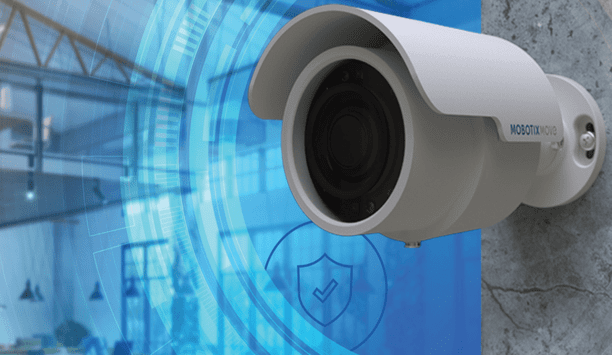
Intelligent video security solutions
Download
Simple Security Solutions for SMBs
Download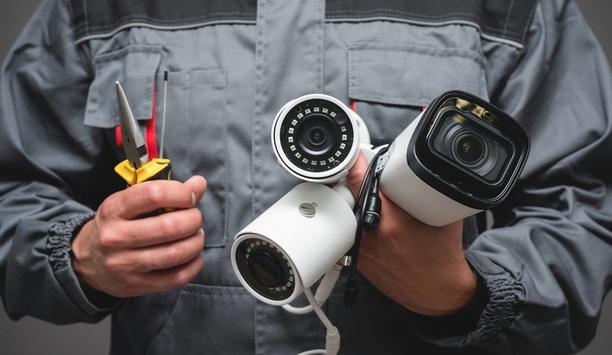
How to lower labour costs when installing video surveillance
Download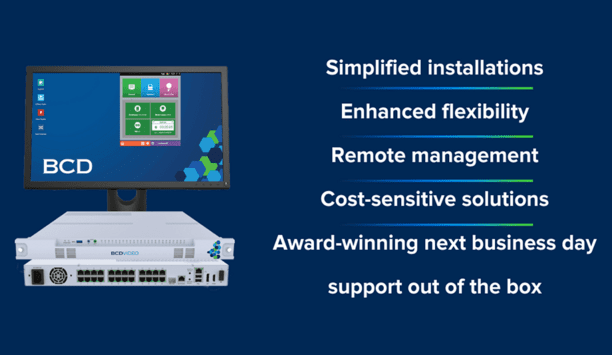
Understanding all-in-one solutions
Download
How video technology is transforming loss prevention, operations, and customer experience in the retail sector
Download
Troubleshooting IP video systems
Download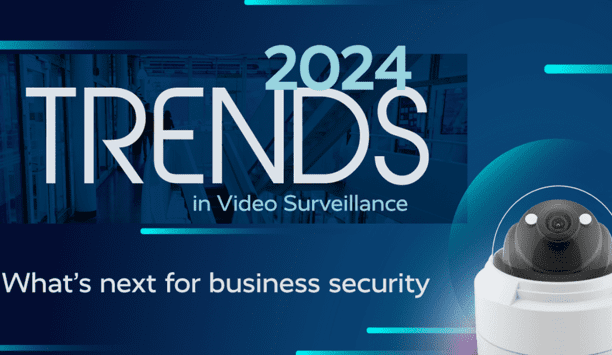
2024 trends in video surveillance
Download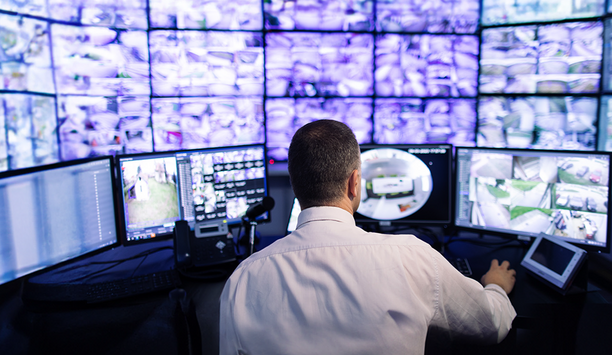
The real cost of an outdated Video Security System
Download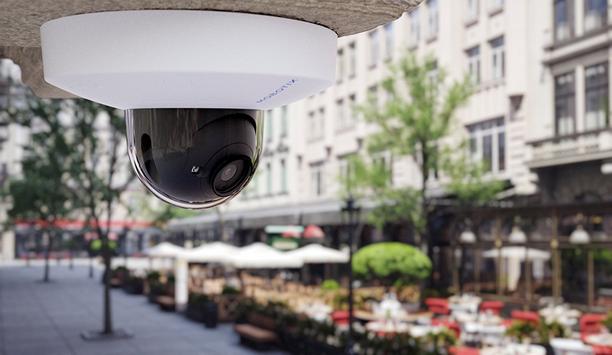
5 easy steps to an upgraded video surveillance system
Download
VSS - Top 4 questions to get you started
Download
Why SAAS Security Platform is more popular in American SMEs
Download
Camera cyber lockdown
Download
Video technology strategies for hospitals are moving beyond security
Download
Healthcare Surveillance: Finding efficiencies from OR to ER and beyond
Download
Unlocking wide-angle camera dewarping
Download
Intelligent video security solutions
Download
Simple Security Solutions for SMBs
Download
How to lower labour costs when installing video surveillance
Download
Understanding all-in-one solutions
Download
How video technology is transforming loss prevention, operations, and customer experience in the retail sector
Download
Troubleshooting IP video systems
Download
2024 trends in video surveillance
Download
The real cost of an outdated Video Security System
Download
5 easy steps to an upgraded video surveillance system
Download
VSS - Top 4 questions to get you started
Download

Videos
Video Management System: Manufacturers & Suppliers
- exacqVision Video Management System
- Honeywell Security Video Management System
- Dahua Technology Video Management System
- Bosch Video Management System
- AMAG Video Management System
- Meyertech Video Management System
- March Networks Video Management System
- Hikvision Video Management System
- OT Systems Video Management System
- Eagle Eye Networks Video Management System
- Axis Communications Video Management System
- Video Storage Solutions Video Management System
- Hanwha Vision Video Management System
- Senstar Video Management System
- IndigoVision Video Management System
- IDIS Video Management System
- Vicon Video Management System
- Geutebruck Video Management System
- AV Costar Video Management System
- Vanderbilt Video Management System

The ultimate guide to mastering key control
Download
Using artificial intelligence (AI) to automate physical security systems
Download
A modern guide to data loss prevention
Download
7 proven solutions for law enforcement key control and asset management
Download
The truth behind 9 mobile access myths
Download
